


































































We’re going to let you in on a secret. Billionaires have billions because they know value is not increased by an in ated price. ey avoid big name markups, and aren’t swayed by ashy advertising. When you look on their wrist you’ll nd a classic timepiece, not a cry for attention–– because they know true value comes from keeping more money in their pocket. We agree with this thinking wholeheartedly. And, so do our two-and-a-half million clients. It’s time you got in on the secret too. e Jet-Setter Chronograph can go up against the best chronographs in the market, deliver more accuracy and style than the “luxury” brands, and all for far, far less. $1,150 is what the Jet-Setter Chronograph would cost you with nothing more than a di erent name on the face.

With over two million timepieces sold (and counting), we know a thing or two about creating watches people love. e Jet-Setter Chronograph gives you what you need to master time and keeps the super uous stu out of the equation. A classic in the looks department and a stainless steel power tool of construction, this is all the watch you need. And, then some. Your satisfaction is 100% guaranteed. Experience the Jet-Setter Chronograph for 30 days. If you’re not convinced you got excellence for less, send it back for a refund of the item price. Time is running out. Now that the secret’s out, we can’t guarantee this $29 chronograph will stick around long. Don’t overpay to be underwhelmed. Put a precision chronograph on your wrist for just $29 and laugh all the way to the bank. Call today!



 By Nick Carter
By Nick Carter
Winter is the best time to sh,” said Capt. Chris Cameron, “the only problem is the weather.”
Capt. Cameron is owner/operator of Fired Up Fishing Charters out of Cocoa Beach, Fla. He said it was tough to nd good weather windows this November and early December, but that o shore shing is primed to re o like a Space Coast rocket whenever conditions stabilize.
Winter on Florida’s Atlantic Coast can be spectacular because of all the migratory species that push down to overwinter in milder temperatures. King sh, cobia, black n tuna, sail sh and others are all hunting the reefs about 18 miles o Port Canaveral. e key to the shery is menhaden.
“ is time of year, you get these huge baitballs,” said Capt. Cameron, “and there are all these sh following the bait around. You nd sh where you nd ‘bunka’ congregating on the reefs.”
Cameron is a transplant from Long Island, New York, and even a er more than two decades living and shing Florida’s east coast, he still refers to menhaden as “bunka,” which is Yankee dialect for bunker, which is what they call pogies up where boats are winterized this time of year.
“On good days, when you can get o shore and the water is clean, we might catch a limit of kings, a couple cobia, a couple black ns and hopefully a sail sh,” Cameron said. Even with 2022’s tightening of cobia regs, that’s a fun and delicious mixed bag to ll the freezer.
At places like Pelican Reef and 8A Reef, where depths range from 75 to 85 feet, Cameron nds the bait and then goes to work slow trolling live baits on double-hook stinger rigs and 20-pound line and tackle. He said he pulls baits at about 1 knot, which allows them to swim along naturally.
“ e thing with slow trolling is you never know what you’re going to get,” said Cameron. “It could be a big king, a sail sh, a cobia or a shark.”
Pitch rods are kept ready in case a cobia shows up on the surface. Cameron said he’s learned from experience not to over-stimulate cruising cobia by throwing multiple lines at once. Usually, clients can convince cobia to bite with a one-two punch. ey keep a squid-tipped bucktail ready for a quick cast. If that doesn’t draw a strike, it allows time to slap a live bait on the second rig, which is a simple 5/0 circle hook.
Shrimp boats are another option Cameron seeks out this time of year. Although chasing them can be a bit of a time gamble, since they are usually 25 miles o shore over 200 feet of water, they can be extremely productive.
“If you see a shrimp boat o in the distance or spot one on the radar, it’s almost always worth a shot,” Cameron said. “When they dump their bycatch in the morning, it pulls everything up.”
Fishing shrimp boats can be short-lived, but
it can also provide fast action for the same species that come o the reef. For this bite, Cameron beefs up to 6500 spinning gear and 50-pound braid and 50-pound mono leaders. He keeps four pitch rods ready, two with bucktails and two with live baits, because the bite can turn into sight shing

in a hurry. Meanwhile, he’ll search with freelined pogies on a knocker rig.
Contact Capt. Chris Cameron and Fired Up Fishing Charters through their website at redupcharters.com.

Winter’s cold fronts consolidate wahoo to their preferred temperature ranges across their range. is makes them easier to target than at any other time of year. e following is a short list of very good destinations for wintertime wahoo.


San Salvador, Bahamas: Way out in the Atlantic in the southern Bahamas, the waters o San Salvador hold one of the best wahoo sheries in the world. Peak wahoo season is December through April, when hordes of ’hoos migrate to the area’s warm waters. e island might just be the
best place on the planet for a shot at a triple-digit wahoo, and the right conditions can yield fast action for 50-pounders, as well.
Within a short 10-mile run o the island, a seamount rises to 180 feet from 4,000 feet of water. is hump is a well-known feature, where wahoo congregate to feed on schools of small tuna. e remoteness of San Salvador keeps shing pressure in check, but it also makes this one of those bucketlist trips you plan ahead for.
Galveston, Texas: O shore humps out of Galveston, Texas also lay claim to some of the best wahoo shing in the world, and every winter anglers connect with giants. is shery, however, is reserved for anglers with the gumption to make 100-mile overnight runs to features like East and West Flower Gardens to catch the morning bite.
Windows of good weather and big, fast boats are a requirement to reach the shing grounds at the edge of the Continental shelf, where wahoo pile up with bait sh on steep depth changes of rock structure.
Murrell’s Inlet, South Carolina: O the South Carolina coast, cooling water temperatures con ne wahoo to the warm water at the edge of the Gulf Stream. is makes them much easier to target than when they are spread out in summer.
Depth changes and structure at the edge of the Continental Shelf, combined with warm 70 to 80 degree waters of the Gulf Stream can be found 50 or 60 miles o the coast. ese structures hold bait sh in the temperature range where wahoo are comfortable. Covering lots of water with high-speed spreads trolls up the best wahoo of the year, every year.
Venice, Lousiana: It seems everything o shore of Louisiana is about the oil rigs, and in wintertime the oil rigs are all about wahoo. e key to nding wahoo on the rigs is nding the right temperature range, and the magic number is 60 degrees. Wahoo congregate and feed around the rigs where there is bait and water temperatures of at least 60 degrees.
One of the great things about Venice is there are deep-water rigs relatively close to shore at just 15 or 20 miles, which means it’s possible to nd a good weather window and go. e Louisiana coast also boasts some of the best catch rates for wahoo in the world, and 50- to 60-pound sh are the norm.
The very best hunting knives possess a perfect balance of form and function. They’re carefully constructed from fine materials, but also have that little something extra to connect the owner with nature.
If you’re on the hunt for a knife that combines impeccable craftsmanship with a sense of wonder, the $79 Huntsman Blade is the trophy you’re looking for.
The blade is full tang, meaning it doesn’t stop at the handle but extends to the length of the grip for the ultimate in strength. The blade is made from 420 surgical steel, famed for its sharpness and its resistance to corrosion.


The handle is made from genuine natural bone, and features decorative wood spacers and a hand-carved motif of two overlapping feathers— a reminder for you to respect and connect with the natural world.
This fusion of substance and style can garner a high price tag out in the marketplace. In fact, we found full tang, stainless steel blades with bone handles in excess of $2,000. Well, that won’t cut it around here. We have mastered the hunt for the best deal, and in turn pass the spoils on to our customers.
But we don’t stop there. While supplies last, we’ll include a pair of $99 8x21 power compact binoculars and a genuine leather sheath FREE when you purchase the Huntsman Blade.
Your satisfaction is 100% guaranteed. Feel the knife in your hands, wear it on your hip, inspect the impeccable craftsmanship. If you don’t feel like we cut you a fair deal, send it back within 30 days for a complete refund of the item price.

Limited Reserves. A deal like this won’t last long. We have only 1120 Huntsman Blades for this ad only. Don’t let this beauty slip through your fingers. Call today!
“This knife is beautiful!” — J., La Crescent, MN
“The feel of this knife is unbelievable...this is an incredibly fine instrument.” — H., Arvada, CO

With grouper season over, it’s time to switch gears and concentrate on other species. is is the time of year to size down and go for the snappers. Depending on water temps, it’s also a good idea to keep a light line out for any pelagics that swim by.


I love yellowtail and a mangrove snappers, but I really like jolt heads, trigger sh, pinkies, black seabass and hog snapper. I treat bottom shing like I’m going (organic) grocery shopping. First and foremost, I don’t shop on every aisle of the grocery store. I go down the aisles that contain the items I really want. e best groceries come from di erent places on the bottom and from di erent depths.
Farther north up the Atlantic coast there are a lot of beeliners (vermilion snapper) taking the place of yellowtails. In this mix will be trigger sh, which I absolutely love! Beeliners and trigger sh have one thing in common: the largest ones of the school stay higher in the water column. is is why I like to sh a level-wind reel versus a spinning reel with small circle hooks for this style of snapper shing. I start dropping one “strip” of the reel
at a time until I get down to the sh. A “strip” is the distance of raising the rod up with your thumb o the spool, and putting your thumb back on the spool. Simply let your thumb o the spool and let it fall in 10-foot “strips” while raising the rod tip upwards. Count the strips it takes to get down to the bites. Four strips will be approximately 40 feet deep. Note where you feel the rst bite. is will usually be the largest triggers and beeliners in the school. If you stop getting bites or you’re only catching smaller sh, let this same tackle go deeper or all the way to the bottom. is is where you’ll catch the jolt heads, black sea bass, mangroves and hogs.
I use a two-hook “chicken rig” made of 50-pound uoro with small circle hooks and a 3-ounce bank sinker. I bait it with small pieces of squid. A small 2- or 3-ounce jig works with the same tackle as the weight instead of a bank sinker. is is especially e ective on large triggers. Just replace the treble hooks or single


J hooks on the back of the jig with small circle hooks and tip with a small piece of squid.
I could go on and on about this style of shing. e limits are pretty good and the reward comes at the table. It is a good time of year to take youngsters out, because this style of shing produces lots of action, and it’s not heavy-duty grouper shing. Little ones love a trip to the “organic grocery store.”
See more from Tim Barefoot at www.barefootcatsandtackle.com and check out a video explaining this style of shing at https://bit.ly/3YcVzV1.









Wprivileged to guide clients there. We have broken many personal bests, and I get goosebumps every morning I launch the boat because I know the quality of sh.
Headwaters Lake is a 10,000-acre manmade lake in Indian River County adjacent to the well-known Stick Marsh and Farm 13. Prior to ooding the land, the FWC and the St. Johns River Management District created habitat with numerous underwater structures, ooded timber, vegetation and 30-foot-deep pits. ere were already existing ponds and pits on the property that contained resident bass, and nearly a million Florida strain bass were stocked along with bluegill, redear sun sh and crappie. ere are thousands of acres of submerged vegetation, mostly hydrilla, along with acres of cattails, spatterdock pads and hyacinth mats that are super fun to sh.
In central Florida, January and February are primetime, when bass are in full prespawn mode and waves of females move up to the ats to spawn. Air and water temperatures drop considerably a er cold fronts. Severe cold fronts a ect the ckle Florida strain bass, but not for long. Usually two days post front, conditions warm up and sh eat well again. ese weather changes transition bass and bait sh from summer patterns into fall and winter staging areas. ey feed heavily on shad and other forage and stage near the spawning ats.
When full moons and 60-degree water temps coincide, bass move onto the ats. ey spawn in waves. Spawning sh select isolated hydrilla clumps, reeds and the bases of pad stems to fan out beds. Hard sand bottom is key. Use sonar to locate hard bottom or stick your rod tip into the water to feel the bottom. If your rod tip pushes into mud, keep moving until you nd sand and then search for isolated cover.
My other primary focus is staging areas. Staging sh eat well and are plump as they congregate to wait for prime conditions to move up and spawn. New sh constantly come and go using the same areas, so they are extremely productive this time of year.
Ditches and canals on Headwaters are highways that bass and bait sh utilize to stage. e intersections and mouths of these canals are high percentage areas to locate schools of sh. Find a canal with nearby ats as well as pits or deeper water for bass to retreat to, and you will nd sh. ey stage on tapering drop o s, mouths of intersections, deep ditches and on main-lake points to ambush bait. I target staging sh with 6- to 8-inch paddletails, glidebaits, Rat-L-Traps, jerkbaits, chatterbaits, prop baits, Whopper Ploppers, spinnerbaits, stick worms and speed worms.
Contact Capt. Ricky Congero through his website at www.blackcloud shing.com or call him at (407) 693-6153.








Technical schools charge tens-of-thousands in tuition. With the Mastry Suzuki RePower TTP (Technician Training Program), you will work with and learn from factory certified technicians and participating in the Suzuki on-line training course all while earning an hourly wage. After completing the Suzuki on-line training course and earning your Suzuki Certification you will be eligible for the Mastry Suzuki RePower Tenured Technicians Bonus Program.



Suzuki RePower Tenured Technicians

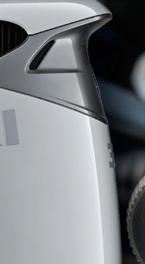



After joining a Mastry Suzuki RePower Center as a certified technician, every month you will accrue $1,000 in bonus opportunity. After one full year of service you will be tenured and eligible to receive all 12 months of accrued bonuses, or $12,000.


As a Mastry Suzuki RePower Tenured Technician along with your regular pay, each month you will be eligible for a $1,000 additional bonus.


At every Mastry Suzuki RePower Center, Certified Technicians are held in the highest regard. Join a passionate team of professionals with the common goal of excellence through constant improvement. With 12 locations across Florida there is a Mastry Suzuki RePower Center near you that wants to appreciate you and your abilities.

Mastry Engine Center
Clearwater, Florida 800-545-4574
Twin Screws Marine Fort Myers, Florida 239-330-3387


Innovation Marine Corp. Sarasota, Florida 941-355-7852

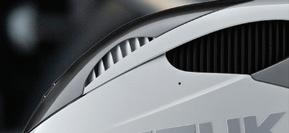


Marina One Deerfield Beach, Florida 954-421-2500
Bayfront Yacht Works Sarasota, Florida 941-349-9449
On Site Marine Ruskin, Florida 813-727-5403
Boat Services Group Key West, Florida 305-320-0555
McKenzie Marine St. Augustine, FL 32084 904-770-2488

Lou’s Marine, Inc. Gulf Breeze, Florida 850-932-0701
Atlantic Marine Store Hialeah, Florida 305-826-2202
Custom Marine Service Panama City, FL 850-872-9191


Oyster City Suzuki Apalachicola, Florida 850-653-8030














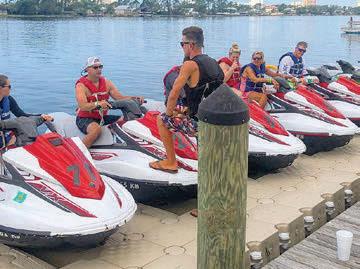

The FWC banned recreational harvest of Atlantic short n mako sharks by setting the recreational bag limit at zero during its Nov. 30-Dec. 1 commission meeting. e previous bag limit for recreational anglers was one mako per angler per day, with a limit of two sharks per boat. In a press release, FWC indicated the rule would make regulations in Florida waters consistent with federal regulations and address over shing of short n makos in support of U.S. and international e orts to manage the species. Commercial harvest of short n mako is already prohibited in state and federal waters.

For more information, visit MyFWC.com.

Moving water and a livewell full of pilchards and pinfish will work for snook, and don’t be surprised if you get a redfish or gator trout off the same flat. However, if you’re looking to snag a snook of a lifetime, use a topwater such as those from MirrOlure.
Redfish are everywhere in the Bay. If you’re having difficulty finding them, locate a school of big mullet--they’ll be mixed in. Live greenbacks and cut baits on a circle hook seem to be the bait of choice, but threadfin herring, large cut greenbacks, cut pinfish, cut ladyfish and cut mullet will also work.

The big trout have started to show up on our flats along with plenty of slot fish. I like to find a flat with plenty of potholes. Start by working the edges and as many potholes as possible--you’re sure to find some worthwhile fish.
Trout are a good species to work on your artificial skills, because they’re not picky. One good artificial is a Gulp shrimp under a popping cork--hook the shrimp just like you would a live one. Just cast out and pop the cork--the popping sound will draw the trout’s attention.


For those who love the drag-screaming action of mackerel fishing, this is the time of year. There are resident fish, but most of the giants are pelagic and follow the baitfish schools. There are more big mackerel around Tampa Bay now than there have been for many years.
 BY: CAPT. WOODY GORE
BY: CAPT. WOODY GORE


Finding them is simple. Just locate a spoil bar or inshore reef within five to eight feet of the surface surrounded by deeper open water of 10 to 20 feet. These are natural feeding areas that attract mackerel. Once you’re anchored up tide from the reef or bar, start pitching a few cut greenbacks. It they are close by, it won’t take long before the feeding frenzy begins. For the macks you keep, bleed them promptly and get them on ice. I put mine in a large heavy duty trash bag before putting them in a cooler.
If kingfish are your thing, hit the beaches and hard-bottoms close to shore. The action is sure to pick up, as water temps come down. Anchor up, and chum or slow troll live baits or spoons.
The pompano are starting to show up along sandy bottoms and around the bridges throughout the Bay. Shrimp and sand fleas are baits of choice. But for me, you can’t beat a Doc’s Goofy Jig with a feather teaser.
The sea bass have been on fire! We have been catching them on almost every trip out to the St. Pete reef within the last few weeks. The sizes on these guys have been roughly 14 to 16 inches with some smaller ones mixed in.
The choice of bait has been live or dead greenbacks but, if you can’t get them, a few dozen hand-picked shrimp from Mitch’s Bait and Tackle will definitely do the trick. (By the way, he pretty much has them all the time). The setup that I use is a Penn 3500ssv lined with 15-pound braid along with a one-ounce sinker and a 3/0 hook tipped with 20-pound fluorocarbon leader.
While fishing for the sea bass, don’t be surprised if you also hook up with a few snappers, too. If you’re ready for arm pain, the big black drums are also around. We were broken off a few times by these big bruisers that were in the 40 to 50-pound range while we were hunting for sheepshead at the bridges. However, we were able to wrangle up a few of the smaller 15-pound class fish.
I have, also, been snook fishing lately. I’ve been throwing free lined shrimp on a moving tide with success. If you have patience, flip out some dead bait and just let it sit. You will be surprised by what you might hook up with this time of year!

When the cold fronts move in, it’s time to fish the deep residential canals for trout. When there’s a super low tide, there’s no water on the flats; therefore, the places these fish can go for both food and safety are limited. I like to use live shrimp on the bottom with a three-foot leader rigged with a split shot. This is, also, an excellent time to break out those stinky Berkeley Gulps, as now is the time when these baits won’t get pecked apart by pinfish or puffers.
Put these tips to use and you’ll set
up for some great cold weather fishing.

The Loggerhead Shrike has often been referred to as the “Butcher Bird.” This bird may seem unassuming at first, but they are voracious predators.
Loggerhead Shrikes typically can be found near fields and other clearing areas with low grass or shrubs. They will perch themselves high up on a tree limb, power line or building and scan fields for their next meal. The shrikes feed on everything including insects, small mammals, reptiles and even other birds nearly as large as them. If you’ve ever seen an insect or reptile impaled on barbed wire fencing, there’s probably a shrike nearby. Often times, if the shrike catches large prey, they will impale them on a thorn or barb on a fence to avoid struggling with the prey or to keep it from escaping.
The Loggerhead Shrike is the only shrike species common to Florida. They can be identified by their gray and white feathers along with a black “mask” and black wing-bars. Shrikes will often mock the sound of other birds and insects to get them to either call back or show themselves to give up their location. After luring in their prey, they swoop down from their perch and pounce.
Keep your eyes open the next time you’re in a park or near a field and, maybe, you can see one for yourself!
— Captain Wes Tallyn was raised in Florida and is a fisherman, birder, avid outdoorsman, photographer, and environmental scientist.

Wes has a focus on conservation and education in the community and is the owner of Snook Jam Outdoors. You can find him on Instagram @ snookjam or call 727-410-5853.

 BY: CAPT. JOHN RIVERS
BY: CAPT. JOHN RIVERS
What a weird weather pattern we’ve dealt with in November being 5 to 8 degrees warmer than normal and December was similar. A lot of people asked what has this done to the fishing, and here is the answer. The trout bite has been outstanding the past month and January should be very good, as the water temps are in the 60’s--right where the trout like it.
My go-to baits for trout are soft plastics such as a Matrix Shad on a 1/8-ounce jig head or 1/4-ounce jig head, depending upon how deep the water I’m fishing. I also have a 17MR MirrOlure tied on, as well as, a Heddon Spook top-water plug. These three lures are my staples when it comes to speckled trout fishing. I’ve been using them for years and they have never failed me yet.

Now let’s talk redfish. Big schools of reds have moved into Tampa Bay. They have come in the past two years in January, and all I can say is that they are chewing and I’m happy, as is my Bull Bay Banshee, 7’2” fishing rod matched with my Shimano Stradic. They are chewing on a variety of baits, from cut white bait to cut mullet and, if you want to toss artificials, tie on a Heddon Spook or a gold spoon and hang on! Look for pushes in the water and lots of mullet, and you’ll find the reds in depths of 2 to 5 feet of water.
Moving on to sheepshead, the bite has been outstanding on many of the bridge pilings, rock piles and docks in Tampa Bay. Live shrimp and fiddler crabs are the baits of choice. Remember to have a light leader and a small #1 or #2 J hook tied on. I like Gamakatsu, but you can use what you like, or you can use a 1/8 or 1/4-ounce jig head depending upon what the current/tide is doing.
Snook fishing has been slower, and it will be until Spring. The major cold fronts we have in January put the snook in Winter mode. They are very lethargic and they are not feeding much. Once the water warms up, the snook should be back to their usual feeding patterns. Until then, I suggest letting them adjust to the weather change and go after some other species.
As you can see, the fishing is usually very good in January and it will last until the last week of February. As we get closer to spring, everything changes and the snook bite fires off.
Tight Lines!
Captain John Rivers | www.tampabayinshoreguides.com captjohnrivers@gmail.com | 727-313-1781


January weather determines what kind of fishing we do and, under normal conditions, we should be in the low 40’s at night and high 60’s during the day. Using this as a guideline, I am going to fish the warm water runoff at the Apollo Beach power plant at first light. My experience tells me the snook, redfish and trout are most active early in the morning as the sun rises and, as the surface water warms up, the jacks, sharks and catfish seem to take over.


Little Manatee River is brimming with action this month. Snook are in the creeks and cuts along the river. Redfish and trout are looking for food and jacks are on the prowl for anything they can sink their teeth into. I prefer using artificial baits in the winter months keeping me oving in search of the prey and, at the same time, teaching myself new spots that I would not try during the summer. For soft baits, I refer Saltwater Assassin paddle tails (P. Seed/ hartreuse Tail, Plum/ Chartreuse Tail, Chicken on A Chain and Avocado/Red Tail) this ime of year working them slowly along the banks and edges of drop-offs.
Continued on page 8







12:43 2.9 2:41 2.3 9:22 -0.7 9:05 1.0 7:25 5:51
1:20 2.9 3:09 2.3 9:53 -0.6 9:41 0.9 7:25 5:51
1:55 2.8 3:36 2.3 10:22 -0.6 10:16 0.8 7:25 5:52
2:32 2.8 4:02 2.3 10:52 -0.4 10:53 0.7 7:25 5:53
3:11 2.6 4:28 2.3 11:22 -0.3 11:33 0.6 7:25 5:54
3:54 2.5 4:57 2.4 11:54 -0.1 7:25 5:54
4:44 2.3 5:30 2.4 12:18 0.6 12:28 0.1 7:25 5:55
5:43 2.0 6:09 2.5 1:11 0.5 1:08 0.4 7:25 5:56
7:04 1.8 6:57 2.5 2:19 0.3 1:58 0.7 7:25 5:57
8:52 1.7 7:56 2.6 3:39 0.1 3:08 1.0 7:25 5:58
10:31 1.8 9:00 2.7 4:56 -0.2 4:26 1.2 7:25 5:59
11:49 2.0 10:01 2.9 6:04 -0.6 5:37 1.3 7:25 5:59
12:47P 2.2 10:59 3.1 7:05 -0.9 6:41 1.2 7:24 6:00





1:32P 2.3 11:56 3.3 7:58 -1.2 7:38 1.1 7:24 6:01
2:13 2.3 8:46 -1.3 8:28 0.9 7:24 6:02
12:50 3.4 2:50 2.3 9:31 -1.3 9:16 0.7 7:24 6:03
I can cover more area and increase my chances of finding fish. Look for holes along the mangrove lines or points where the currents have dredged cuts or pockets. Any change in the depth of the water will make a big difference to fish during the winter. For hard baits, my go to has always been the MirrOlure 52M11 red head silver sides and white on top and bottom. Although, this past year, they introduced the SKIN series (CS17MR PIN, CS17MR PRD and CS85MR Mullet) and they have been a killer for me. Early in the morning, I work them from the shallows and over the holes to produce the most action.
If you like live baits, shrimp works great this month, with a 1/0 circle hook and a 20-pound fluorocarbon leader about 36 inches long. Remember, this time of year, the water is extremely clear, so the light leader helps in getting more strikes. I use a small split shot placed about 4 inches from the hook--this allows me to keep the bait close to the bottom where the fish are feeding. You can use the same method of fishing with artificial baits by working the artificial shrimp along the bottom with a slow retrieve, which helps in locating where the fish are staging.

Sheepshead are one of my favorites during the winter months, as they prove to be great fighters on light tackle. Feeding most-
ly on shrimp, fiddlers, small crabs and barnacles, they are considered a great table fair. Some anglers even call them chicken of the sea. The big females prefer the deeper waters of the Tampa Bay, hanging around the ledges, wrecks and rock piles in anywhere from 12 to 30 feet of water and averaging in size from 4 to 12 pounds. Here, I prefer to use medium tackle, a 7’6” medium action rod with a larger spinning reel loaded with 20-pound test braided line and a 25-pound test fluorocarbon leader tied with a loop knot to a number 1/0 J hook. I use a Texas rig where the sinker slides on the leader just ahead of the hook. I also use a small glow soft bead, because this keeps the sinker from hitting the knot and the glow beads seem to draw the attention of the larger fish. Live shrimp, fiddler crabs, bloodworms and sand fleas are some of their favorite baits. Smaller sheepsheads prefer docks and oyster bars in shallow water, so just downsize your tackle and enjoy catching a great fighting fish.
— Capt. Sergio Atanes is host of Florida West Coast Fishing Report on Facebook and YouTube every Monday night 7-8 p.m. live. He is also host to Aventuras De Pesca USA on national TV and Radio Show. reelfishing.com | Email: atanes@msn.com | Phone: 813-973-7132


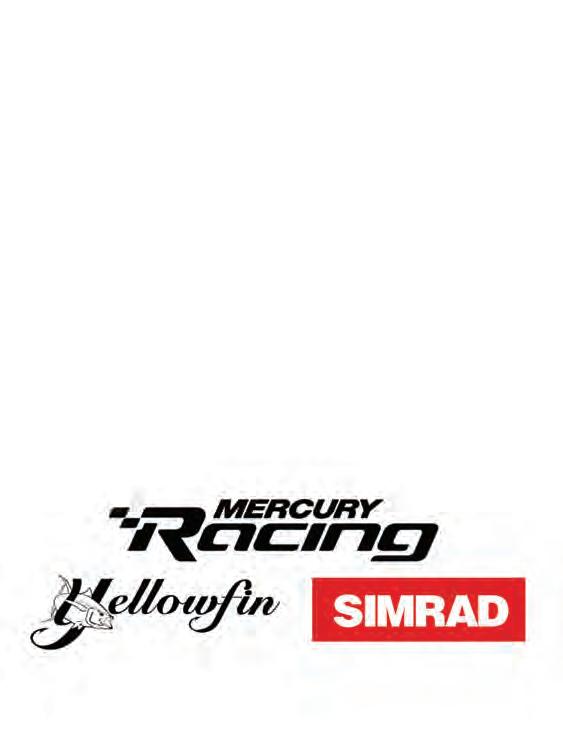
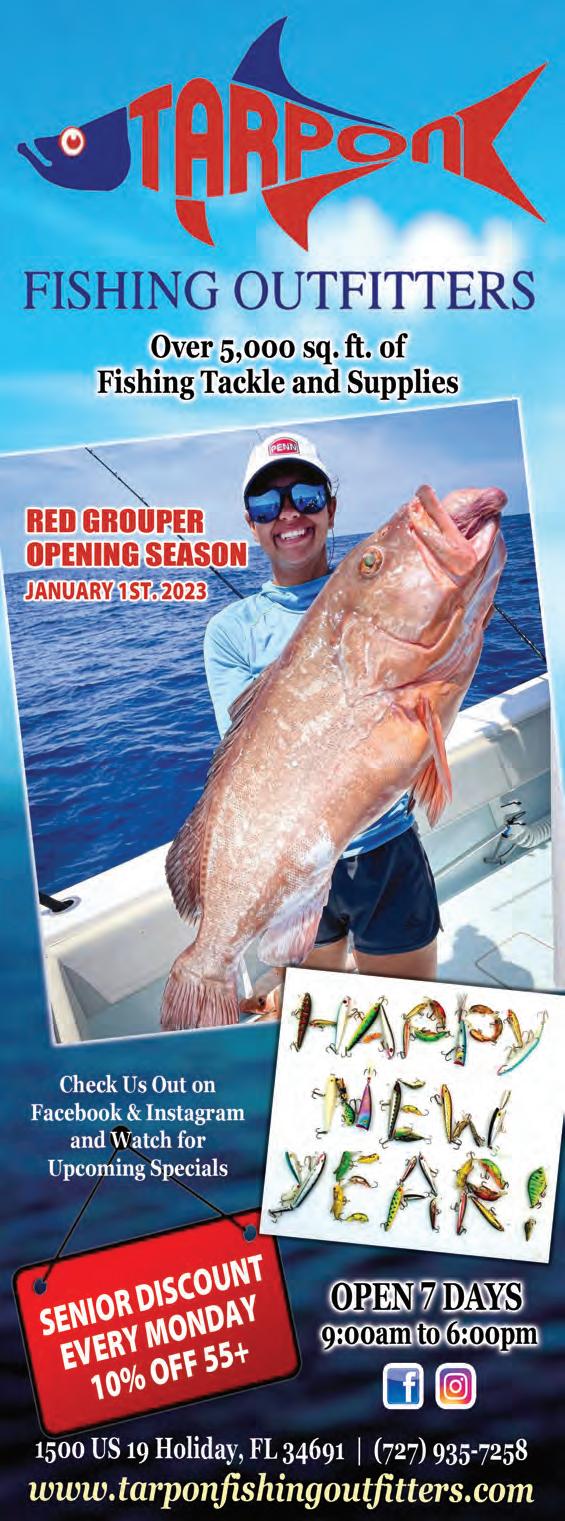
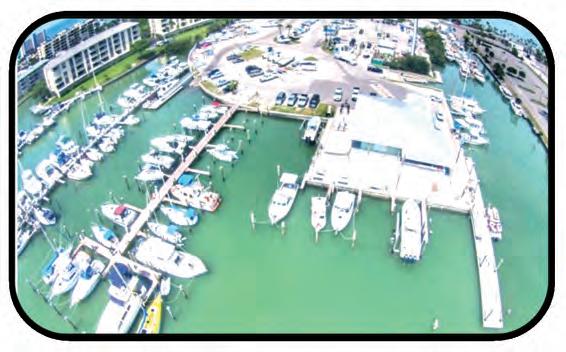
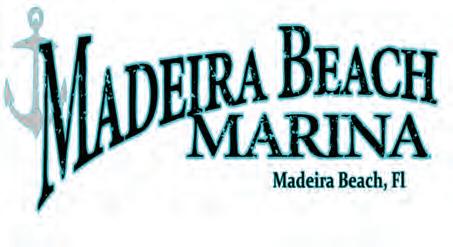



Sometimes it’s hard to make changes in our lives from everyday things; in this case, fishing. When I first started in the business, paper graph depth finders where the thing and, if you could afford a Ray Jefferson, Furuno or a Si-Tex machine, you were in the grove. Along came the digital world and I, and many other captains, said no way I am changing--and we did change for the better.
Soon, we found the improvements made fishing easier in a way. Also, the average Joe could learn to catch fish if he just spent a little time learning how to read the bottom with the new system. The Honey holes, ledges and rock piles, the experts new about, now became public knowledge.
Boat and motor technology has also changed so much in recent years making life easier and more enjoyable. Outboards are now much more dependable. No more carrying a 9.9 kicker motor, in case your main one gave out. This has all come about from companies listening to the end user and making the changes needed to succeed in a competitive market.
I want to give credit to the Maverick Boat Group for being one of those companies. It’s tough to make changes when you already have a great product, but they listened to many of us who spend hundreds of hours on the water. They not only get to hear from the angler but from their better half, what they would like to see in a fishing boat.
So, here is my take on it. You already have some of the best fishing boats in the market just short on some things and, yes, I know you can’t have the perfect boat, but that is where the new 2400 TRS comes into play. We want a nice casting deck, enough storage for the vitals, enough baitwells to be able to fish all day and decent draft to fish the shallows. Pathfinder had that, but was missing a few things. Here is where they listened.
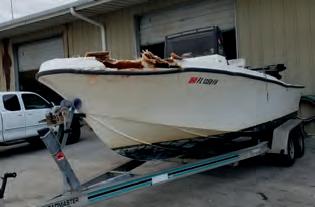
They took the old 2400 TRS (23’ 6” LOA with an 8’6” beam) and did this to it. The new 2023 2400TRS has a 24’ 4” LOA with a 9’ beam. The draft is 14” with 15 degrees of deadrise. The boat can handle up to a 350 HP outboard and comes with one 38-gallon live well with the option to add another 38-gal release well. The console big enough to put up to a 16-inch screen sonar/GPS combo with room for a stereo plus a VHF radio. There are cup holders and a place for your cell phone, wallet and keys. Add the tee top with more storage and more rod holders and you have a fishing machine. For comfort and convenience, there is an integrated forward-facing backrest at bow and, they now have a larger console with an optional pump-out head. There is center rear seating with under seat storage and they raised the gunnels by 4 inches. There is a teak bow table that fits inside the console when not in use. They offer a shade package, if you need more cover.

Maverick Boats has produced a winner that was a long time coming, but worth the wait. Some of the items listed are optional and there is a ton of other optional items you can add to make the 2400TRS your dream fishing adventure machine.
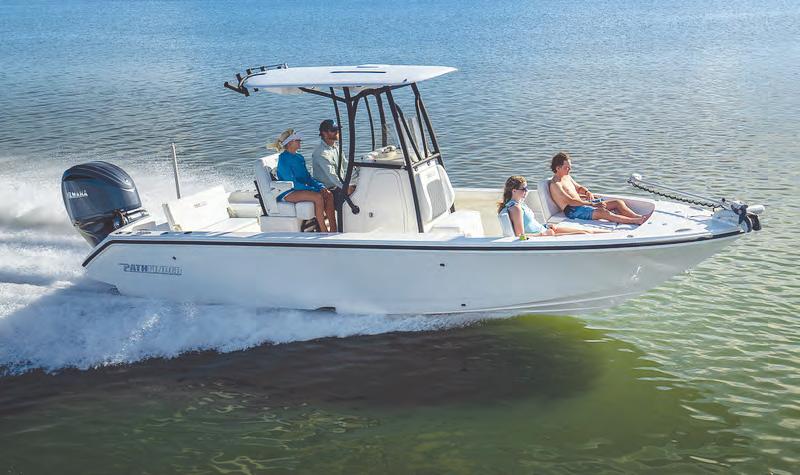
For more information go to: www.pathfinderboats.com
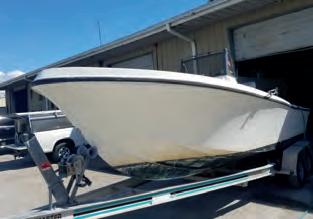

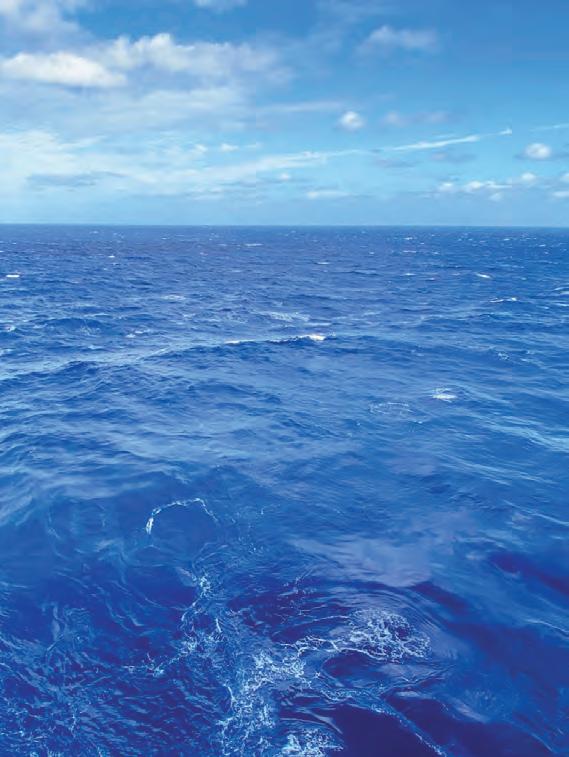
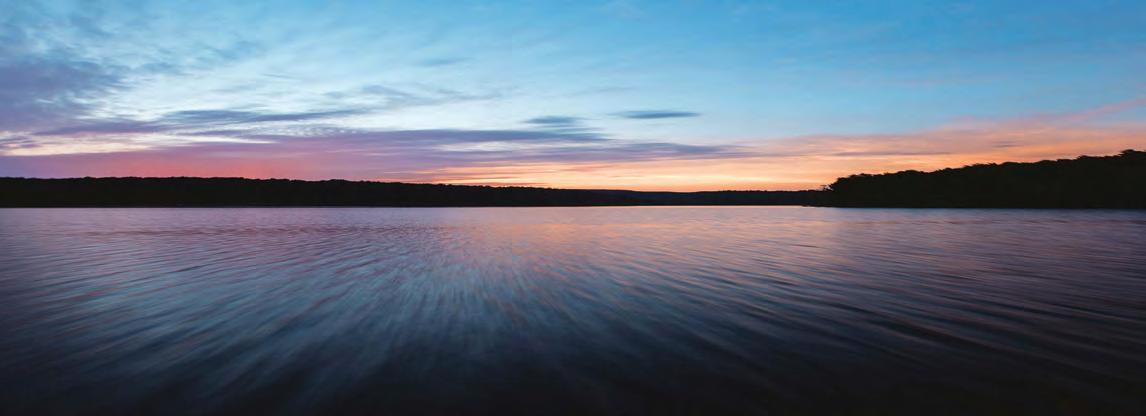



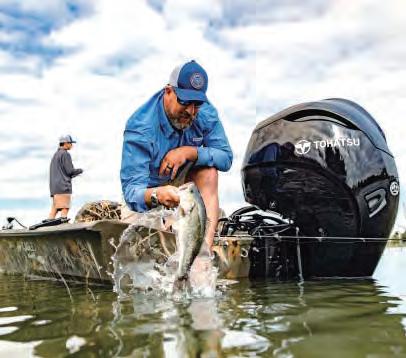
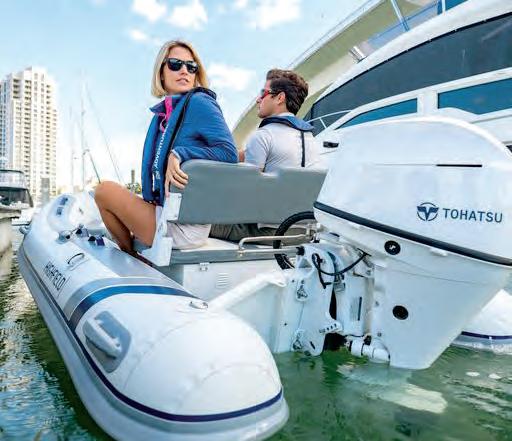


Isat down with a good friend of mine the other day and we got to chatting about great trips and crazy experiences we have had over the years on the water. He reminded me of the time he got very lucky after being, well, dumb and how we can all learn from his mistake.


Before we leave the dock, we seem to do a good job of checking our gear and making sure our tackle boxes are full. Is the drag set to the proper tension on our reels and are our rod tips in good shape? Do we have enough bait and ice in the fish box for everything we are going to catch that day? Did you grab the sunscreen and, most importantly, are the beverages we are going to enjoy on our ride home onboard? We seem to do a great job in all these areas but, all too often, we leave the most important ones off the list. Is the VHF working properly? Did we give someone a float plan and do we have a basic first aid kit onboard? Most importantly, and the one that seems to be overlooked all too often, do our bilge pumps work properly?
Forrest Gump was spot on—”s..t happens”. And when it does, it seems to always happen fast when you are on the water. Your boat is built to float but, in order to keep your boat floating and at its happiest, it needs your help. Before every trip, take the time to flip on your bilge pumps and make sure they are working. Check that they are free of any debris that may clog them. Every boat should have a float switch or high-water alarm to let you know if
water is coming in before it’s too late. Put a few extra fuses for both in a watertight container (Ziploc storage bags work great) and leave them in a safe place, just in case. Grab a flashlight and shine it on your hoses and hose clamps to make sure everything looks good. This takes only a few minutes at most but, in the event of an emergency, it is worth all the time in the world.

Spending more time on the water than on land and dedicating one VHF channel to 16, I hear all too often boats in trouble, taking on water and their pumps not working properly. In the case of my good friend, they didn’t plan on hitting a submerged tree while underway that cracked their hull (remember the words of Forrest Gump?). Their pump was not working before they left the dock. A wire had just pulled out of its connection and they chose not to address it before leaving that day. Luckily, all ended well for my friend that day. What we can do is learn from others’ mistakes and take those brief moments to make sure, if something does happen, you and your boat are ready for it.
— Capt. TJ Shea. Owner/Operator 2 Shea Fishing and Diving Charters. TJ has been exploring above and below the Gulf of Mexico since he was 8 years old. Contact us at 813-385-2169 and at info@fishanddivetampa.com



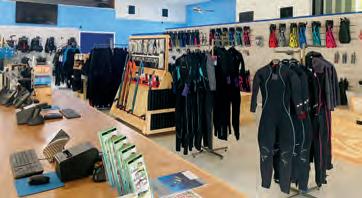
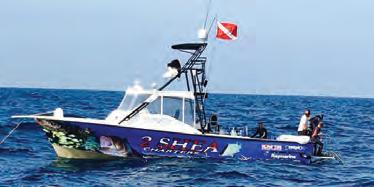
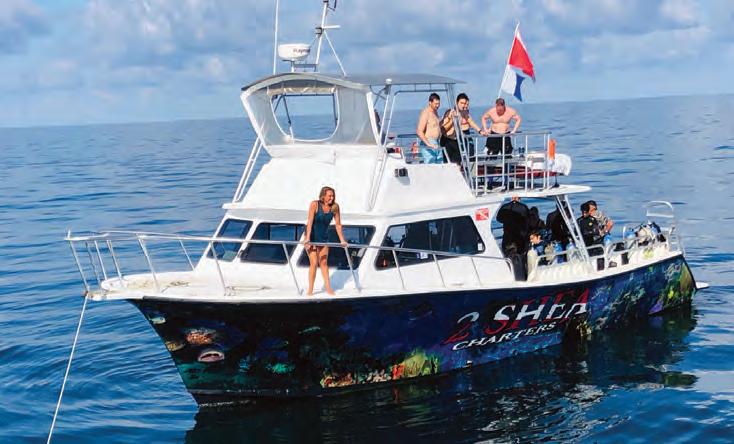
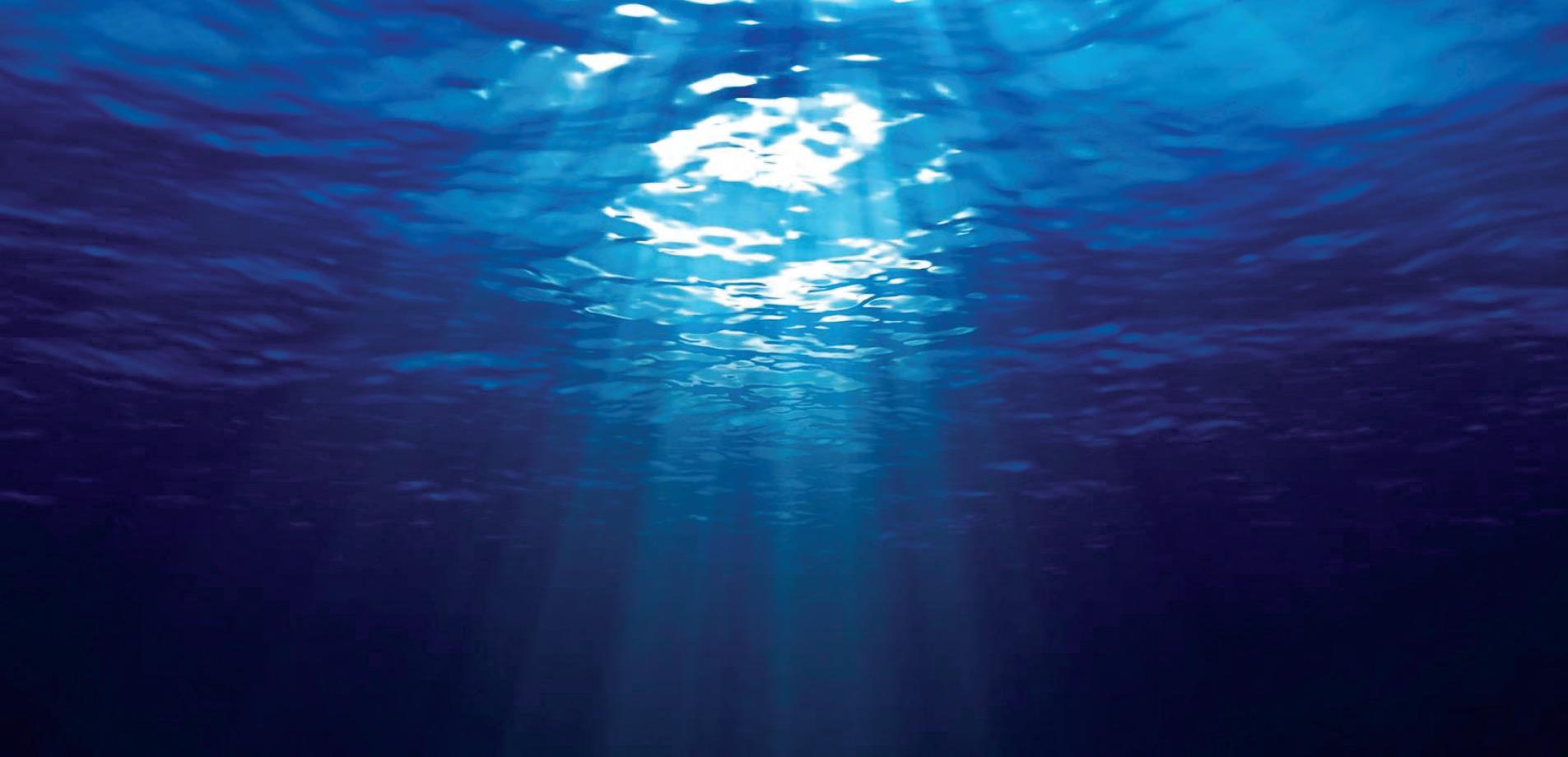



Happy New Year! 2023 has officially started, which means we have a fresh start and a new year to accomplish all of our fishing goals. Let’s start this year off with some great catches while, also, spending quality time with family and friends. Fishing is great, and it’s even better with the ones we love.
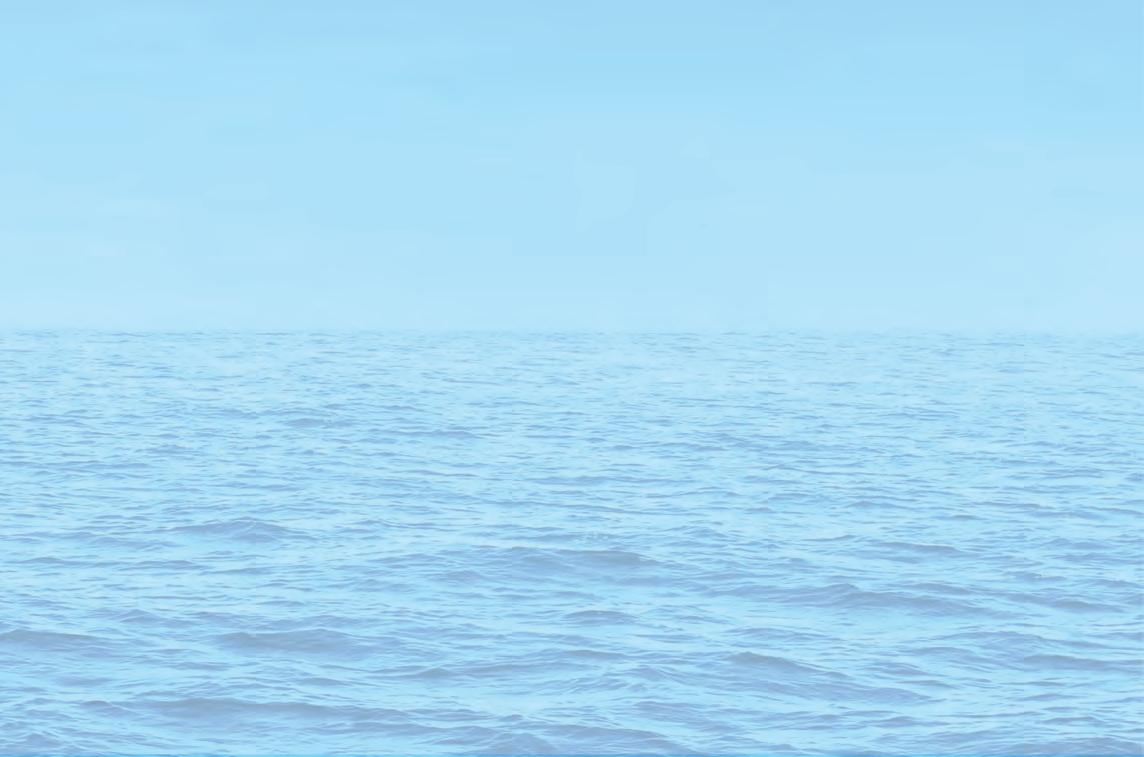
January is a fairly stable month to fish, with most of our inshore fish having already crossed over into their Winter-time habits. The Winter trend will remain until the water temperature warms up enough and becomes stable again in Spring. The water will not be an ideal temperature for a while, so look for all of our inshore fish in generally all the same areas. Find warmer water sources as close to the open bays as possible and you will find fish. Natural springs, creeks, potholes and channels are all good places to find fish this time of year.
Now, the tricky part of this is that these fish move--frequently. If we are on a warmer trend for a few days, these fish will move out of the holes and springs into shallow water to enjoy some sun and bait fish. Redfish and trout love to munch on shrimp and crustaceans during the Winter. Shrimp is my go-to bait through the Winter for almost everything.
We recently got some really nice sheepshead, snook, trout, redfish and black drum all in the same area and all with the same bait--shrimp. Fresh or frozen, shrimp will do the trick. These fish are hungry and do not want to waste a ton of
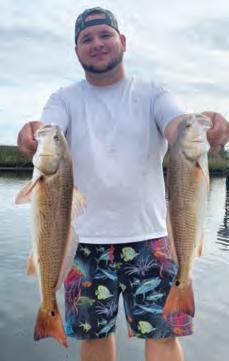
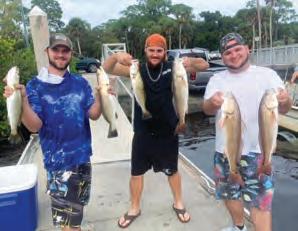
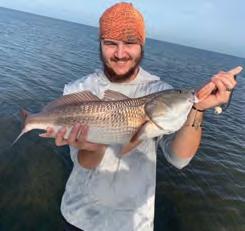



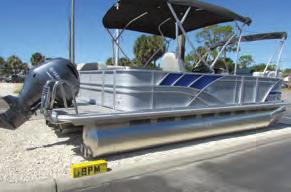
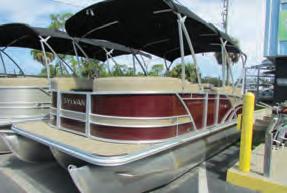
energy to eat. Now, if I am specifically targeting big snook or redfish, I like to freeline large creek chubs. Big snook or redfish will not refuse them. If you are using big creek chubs or shrimp and you are not catching fish, you may not be in the right spots.


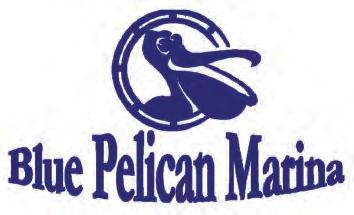
Also, remember our negative tides are in full effect. Make sure you keep this in mind, as the water will be very low on certain tides. The water, also, may not be quite as high on the high tides. Boating safety is a priority. Know your tides, your vessel’s draft depth and ability to navigate shallow waters--don’t get stuck in a creek (although most of us have, ha). An important factor to gauge your tides is the wind. Winds out of the North and East will cause the tide to stay out and the charts to be off. Please keep that in mind when planning your boating trips.
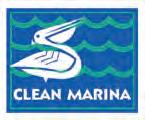



As always have fun out there, be safe and catch some good ones! — Captain Gary Reel Shallow Fishn Charters | 352-575-6791 www.reelshallowfishn.com | Facebook @Reel shallow fishn charters

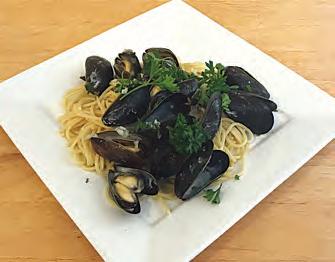
Ingredients:


• 4 pounds fresh mussels
• 2 cups white cooking wine

• 1/2 teaspoon salt
• 5 garlic cloves finely chopped
• 3 teaspoons finely chopped shallots
• 1/4 cup of parsley chopped and split in 2
• 4 tablespoons extra-virgin olive oil
• 1/2 lemon juiced
• 1 box pasta
Directions:

• In a large pot bring water to a boil and add pasta.
• Rinse and check that mussels are not open. If any of them are open they must be discarded.

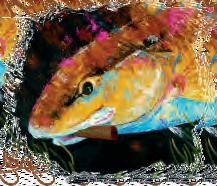
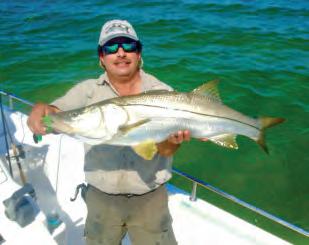
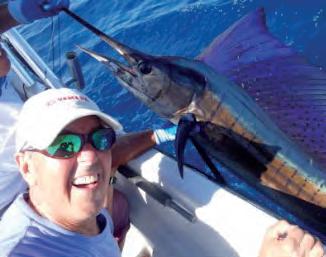
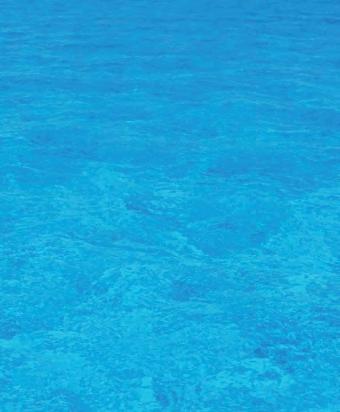

• In a large pot heat to medium-high heat, bring wine, salt, garlic, shallots and 1/8 of a cup parsley to a simmer.
• Add the mussels to the pot, cover and simmer until all the mussels open, about 5-8 minutes. Don’t overcook them.
• Rinse your pasta and place in bowls.
• Separate mussels. In the pot where you cooked the mussels, add olive oil and lemon juice. Pour the mixture over the mussels and garnish with the remaining parsley.
• Add mussels
Caroline Lewis has the love of fishing in her soul. While most young ladies aren’t interested in cutting up chum for bait, quartering mullet or spending hours mastering the use of a cast net, Caroline finds value in these skills and is committed to the hunt for big fish and learning the tactics involved to be successful.
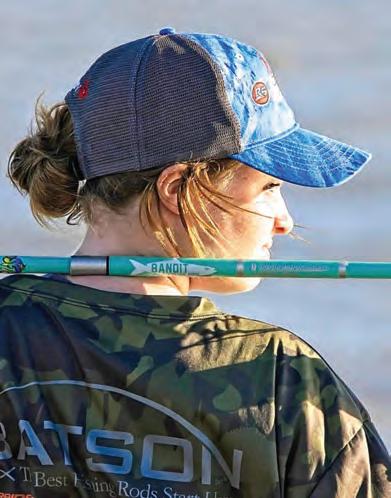

As a young angler, Caroline has boated large cobia, mahi, snapper and has played tug of war with sharks the size that most adult anglers dream of. Caroline’s true passion is hauling in bull redfish during the Fall run by tossing baits into current rips or over the break of the surf. Just shy of ten years old, Caroline created the non-profit organization called the Kids Can Fish Foundation and serves as the leading influencer of the organization and has become a role model for youth anglers across the country.
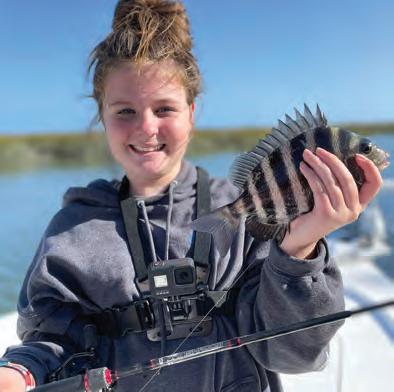
The Kids Can Fish Foundation, a nonprofit charity, was a spin-off from Girls Can Fish. While 20 miles off shore, fishing with her father (Tom Lewis), Caroline hooked in to a huge cobia--that cobia was being chased by a shark. At nine years old, fighting this amazing fish with a massive predator looking for its next meal and successfully landing and boating the fish is a mighty feat for such a young girl. Caroline was so excited about her catch that, when she got it in the boat, she shouted out with extreme excitement, “Girls can fish!” Her father looked straight at her and said, “that could be something”, and that’s when Girls Can Fish was created. Caroline was excited to start something to get more children involved in the outdoors. Not knowing what it may become, she went home and sketched out her first logo. Fast forward a few months and, on her 10th birthday, her dad had that sketch made into an official logo for her. They soon started a YouTube channel, some social media pages, printed some stickers and shirts, and Girls Can Fish started building their name.
Caroline’s incredible influence and her strong passion for fishing was pouring over into all children--not just girls. They received many messages, comments and people reaching out asking about getting the boys and young men involved as well. With all the interest they were receiving, Caroline, Tom and their friend Brandon put their heads together and came up with Kids Can Fish. Next month, February, will be the second year anniversary of the Kids Can Fish Foundation. What they have accomplished in two years is just incredible.
Caroline, Tom and Brandon have organized an annual tournament called SSI Running of the Bulls Charity Redfish Tournament. It is one of the largest youth and adult surf style redfish tournaments on the East coast. Adults and kids compete for cash prizes, also winning high end fishing gear, trophies, gift cards and other sponsor related prizes. It’s held at Saint Simon’s Island in Georgia. The annual tournament falls on Columbus Day weekend every year. This year’s tournament dates are October 7th and 8th, 2023. Their most recent tournament had 180 participants and some that traveled as far as Washington, West Virginia, Connecticut and more.
The Kids Can Fish Foundation also organizes and hosts high quality kids fishing camps throughout the year. From seawall camps to popping corks, cast netting camps, camps that target sharks, sheepshead, pompano and other mixed bags of fish, all from the surf, Caroline is hands on and absolutely loves helping other kids catch their very first fish or teaching them how to throw the cast net. Caroline and the Foundation are sponsored by Team Rainshadow/Batson, Fishbites, Bandits custom Rods, Pro/Ahi Castnets, Florida Fishing Products, Monster Bass, Big Bite Baits and more. These amazing sponsors help with many things, including prize packs for the Foundations plus monthly and yearly contests on their Facebook page. You can check out the “Kid of the Day”, as well. (www.facebook.com/kidscanfish). With over 20k followers across their platforms, they post some insane catches daily!
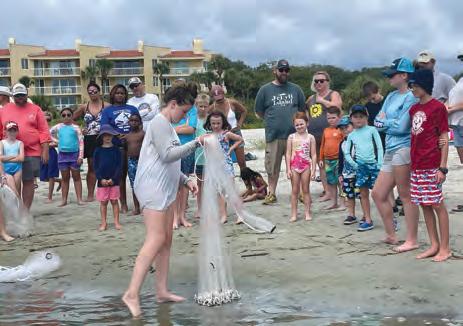
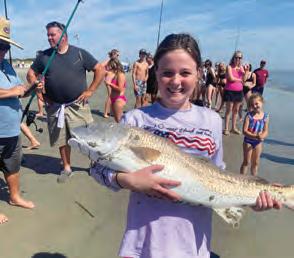
I am so proud of Caroline, what she has created and her influence on our younger generation. We can either watch life from the sidelines, or actively participate. Either we let self-doubt and feelings of inadequacy prevent us from realizing our potential, or embrace the fact that when we turn our attention away from ourselves, our potential is limitless. Keep being an incredible role model for our youth Caroline!
Caroline’s fishing goal for this year is to catch a 7+lb. bass, so she can beat her little brother Graham’s PB, for bragging rights. Keep at it girl--I know you can do it!
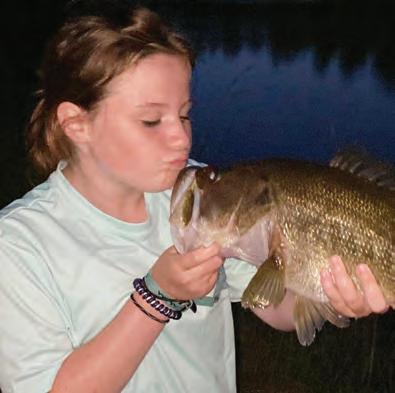
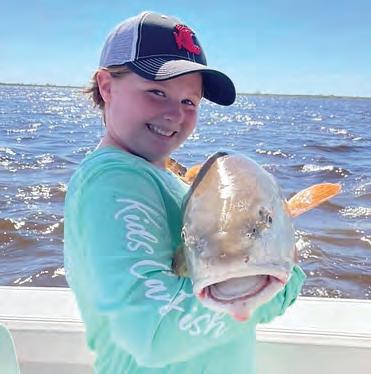
Check out more on their website: www.kidscanfish.net
 — Tanya Michelle: Mother, professional tournament angler, ICAST 2021 champion, journalist, videographer, digital creator, influencer and mentor.
— Tanya Michelle: Mother, professional tournament angler, ICAST 2021 champion, journalist, videographer, digital creator, influencer and mentor.


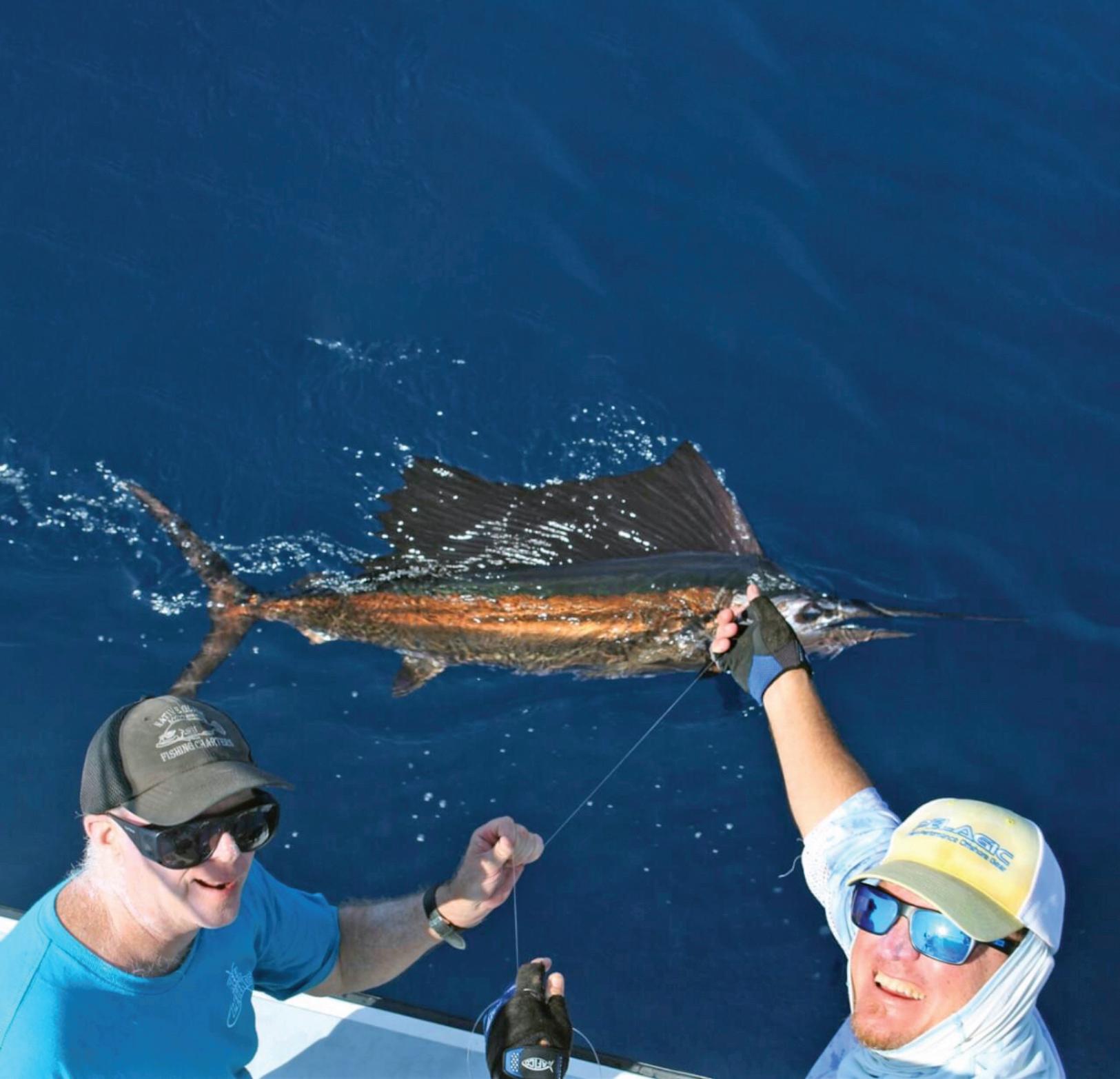


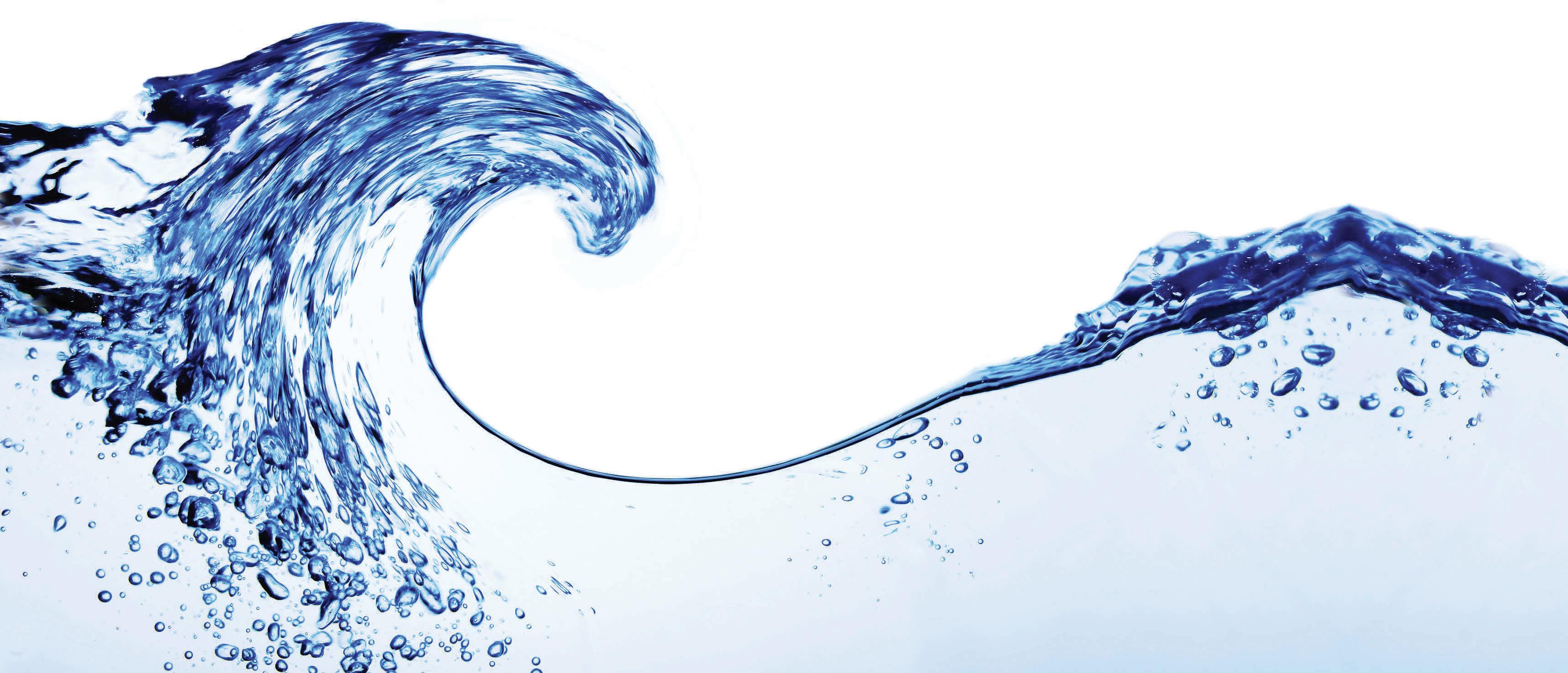





their anal n. ese long skinny sh are built for speed and can reach max speeds of about 70 mph.

Atlantic sail sh participate in seasonal migrations along the coast of America. Some sh will stay where they are, but most move northward in spring and south during the winter. is is due to the bait schools following the cold cycles. As soon as it gets hotter up north, they migrate. Once winter sets in, they return to Florida. Sail sh spend most of their time in warm surface waters of the epipelagic zone of the ocean. ey make frequent nearshore forays and congregate where water temperatures are in the 70 to 80 degree range.
ey begin spawning in spring, and this can occur as early as May or all the way into the fall. Like many other pelagic sh, sail sh use a process called external fertilization, or broadcast spawning. Males release sperm and females release eggs into the water current. Each female can produce about 4.5 million eggs. Once the sail sh hatch at around an eighth of an inch, they grow rapidly to about 6 pounds within a month. eir growth slows once they reach about 4 feet in length.
Capt. Charlie Stuve put me on my rst sail sh. He runs Native Guide Fishing Charters out of Jupiter, Fla., and sail sh are a favorite winter target for his clients.
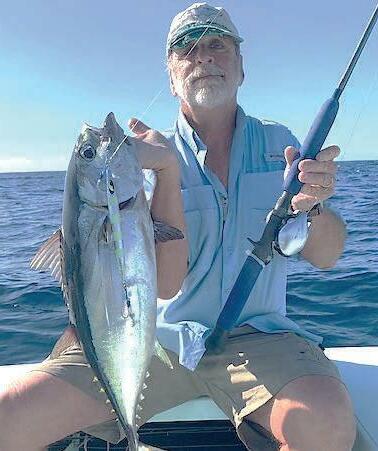


“I suggest live baiting,” said Capt. Charlie. “Goggle eyes are the most popular bait, but other baits work, as well. Kite shing is preferable with goggle eyes, but I also do well slow bump-trolling edges. Live thread n herring, Spanish sardines and pilchards are my favorites while dri ing on a color change.

Now that the cold has set in and will be here for a bit, we once again change focus on what we are catching. Most larger sh tend to slow down during winter months since it takes more energy out of them; however, this is not the case for sail sh. As long as you are brave enough to venture into the rough winter seas, you’ll be sure to get on the bite.
Sail sh are the sleek and slender member of the bill sh family. eir name comes from the extremely large dorsal n that extends over almost their entire back. ey also have long pelvic ns, which stretch almost to
“Depths can vary, so don’t use yesterdays information because conditions constantly change. Sometimes when the bite is slow, I like to bottom sh and y a kite downwind. at way you stay busy with the bottom action and when you least expect it you have a sail sh on your kite.”
e IGFA world record for Atlantic sail sh weighed 142 pounds, 6 ounces and was caught in Lobito Angola in 2014.
Emily Rose Hanzlik holds 56 IGFA world records in various categories. She hails from West Palm Beach, where she has a part time Bow n Guide Service as well as shing classes for Jr. Anglers. Find her on Social Media @emilyhanzlikoutdoors.


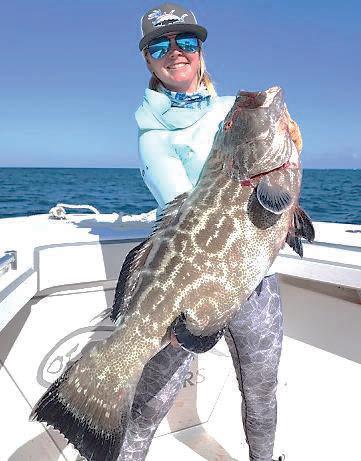
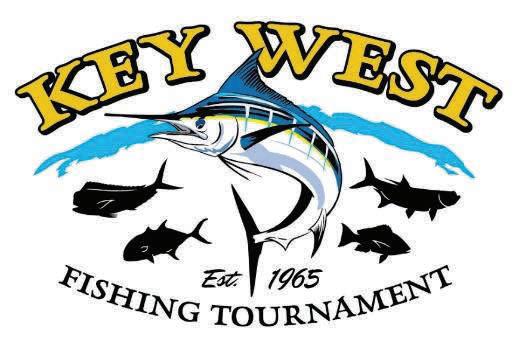








The FWC approved rules to help conserve Gulf striped bass in Wakulla County’s lower Ochlockonee River at the Nov. 30-Dec. 1 commission meeting.
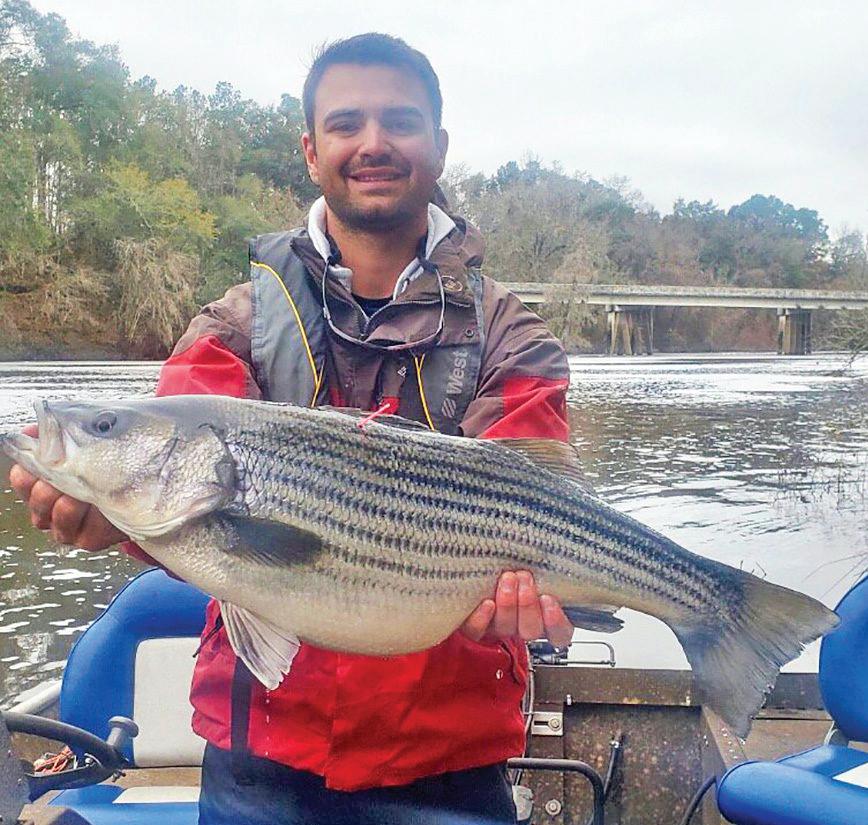
FWC research has identi ed high rates of recreational harvest of brood sh (breeding sized) Gulf striped bass, and sta proposed rule language to change the harvest length limit. e bag limit of three sh per day for striped bass will remain in e ect. e proposed change to the length limit would change from 18 inches minimum size to no minimum size with only one sh allowed over 24 inches. Gulf striped bass populations are dependent on stock enhancement via hatchery production and protection of these larger-sized striped bass is necessary for the continued survival of the species.
“ is rule change is a positive step for Gulf striped bass, an important sport sh in Florida,” said FWC Commissioner Gary Lester. “We appreciate sta working with stakeholders on these ongoing conservation e orts for the future of this shery.”


Sta held public meetings with local anglers to discuss research and management options for this shery at Lake Talquin in May 2022 and an additional meeting in November to discuss the rule language. Anglers were supportive of using regulation changes as a management tool. Further stakeholder engagement will occur on this rule.
Email Christopher.Paxton@MyFWC.com with questions, or visit the striped bass pro le on MyFWC.com.

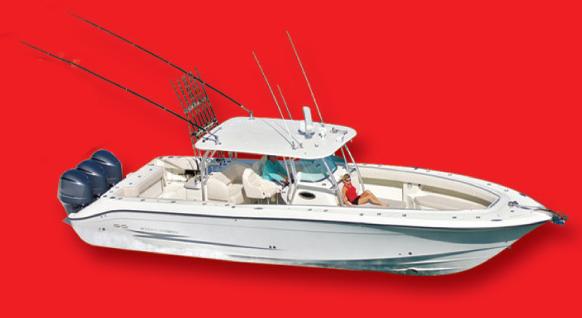
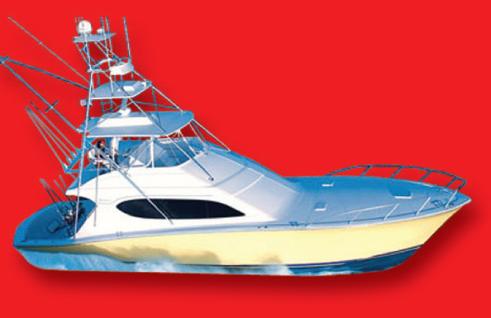














Let’s grow with Florida together.
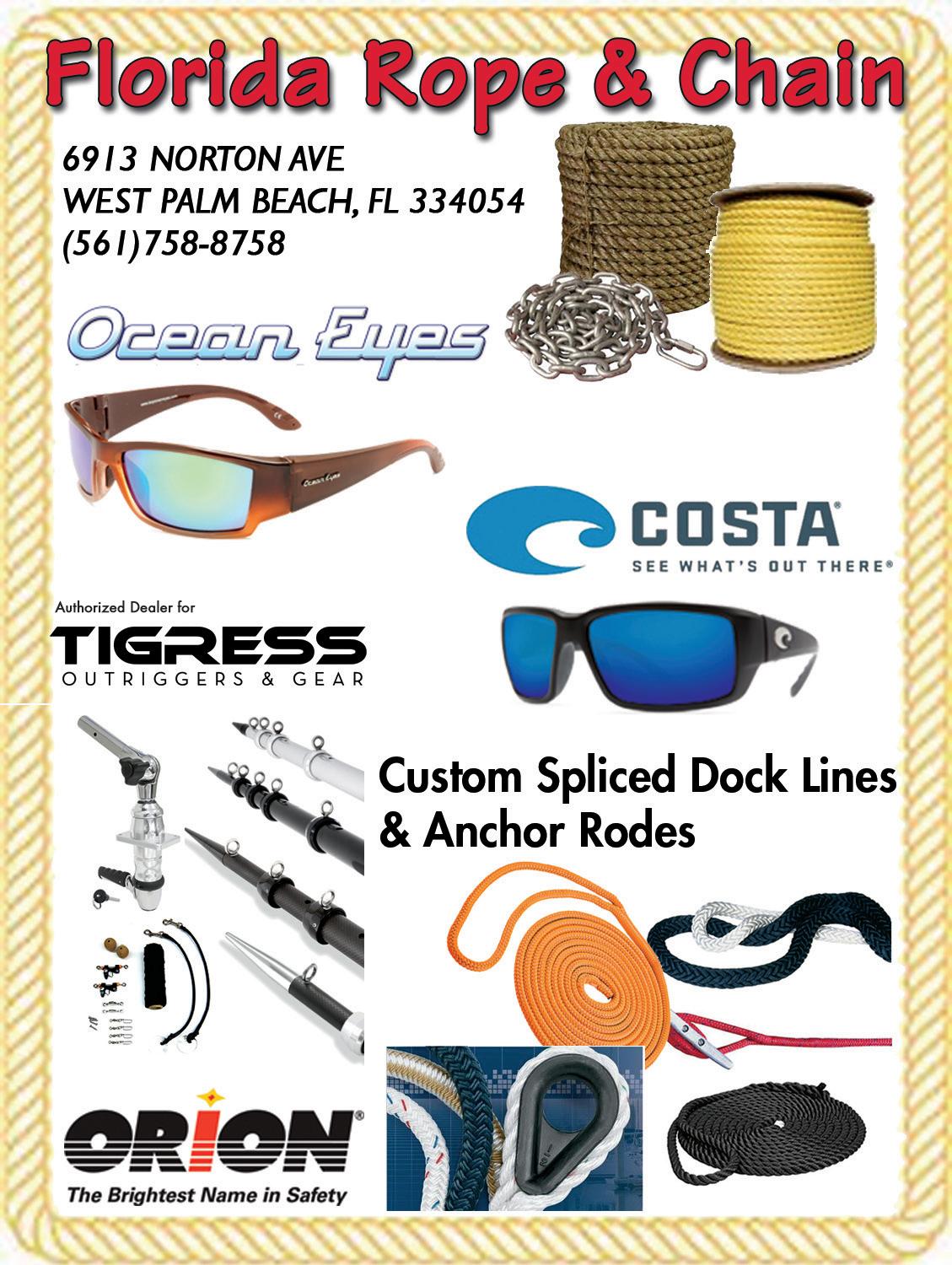
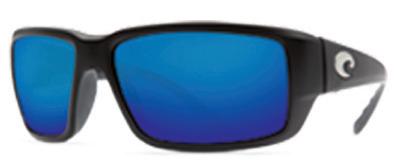



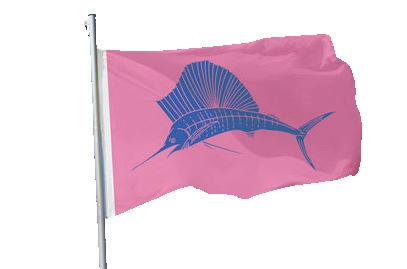





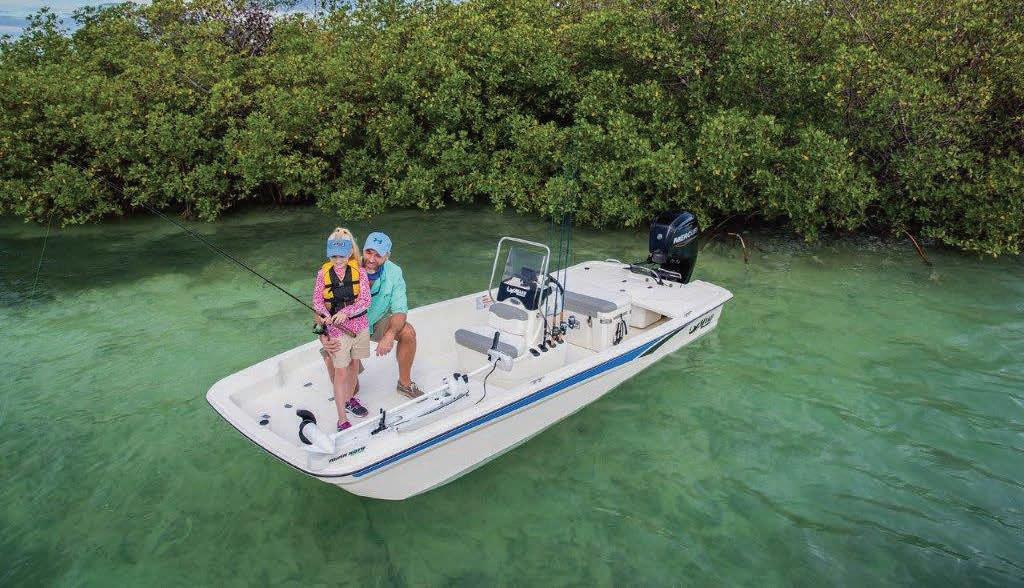
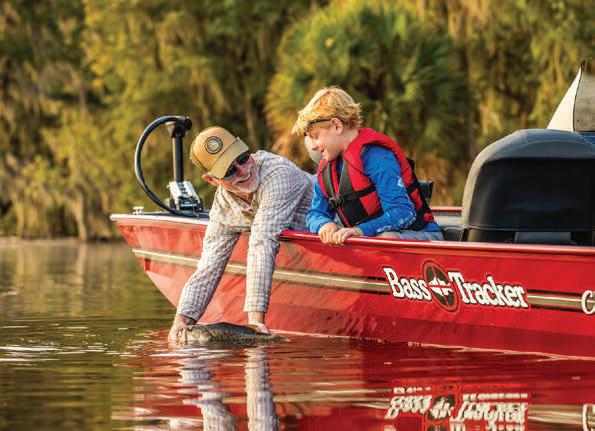
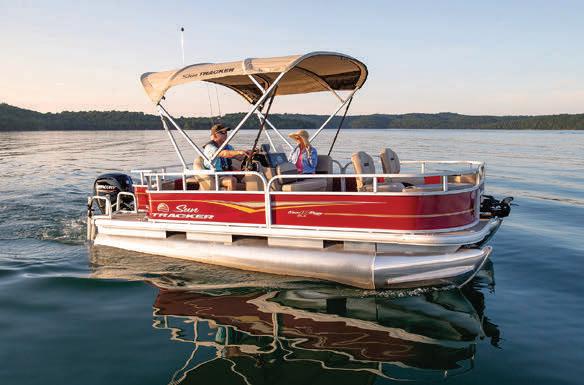








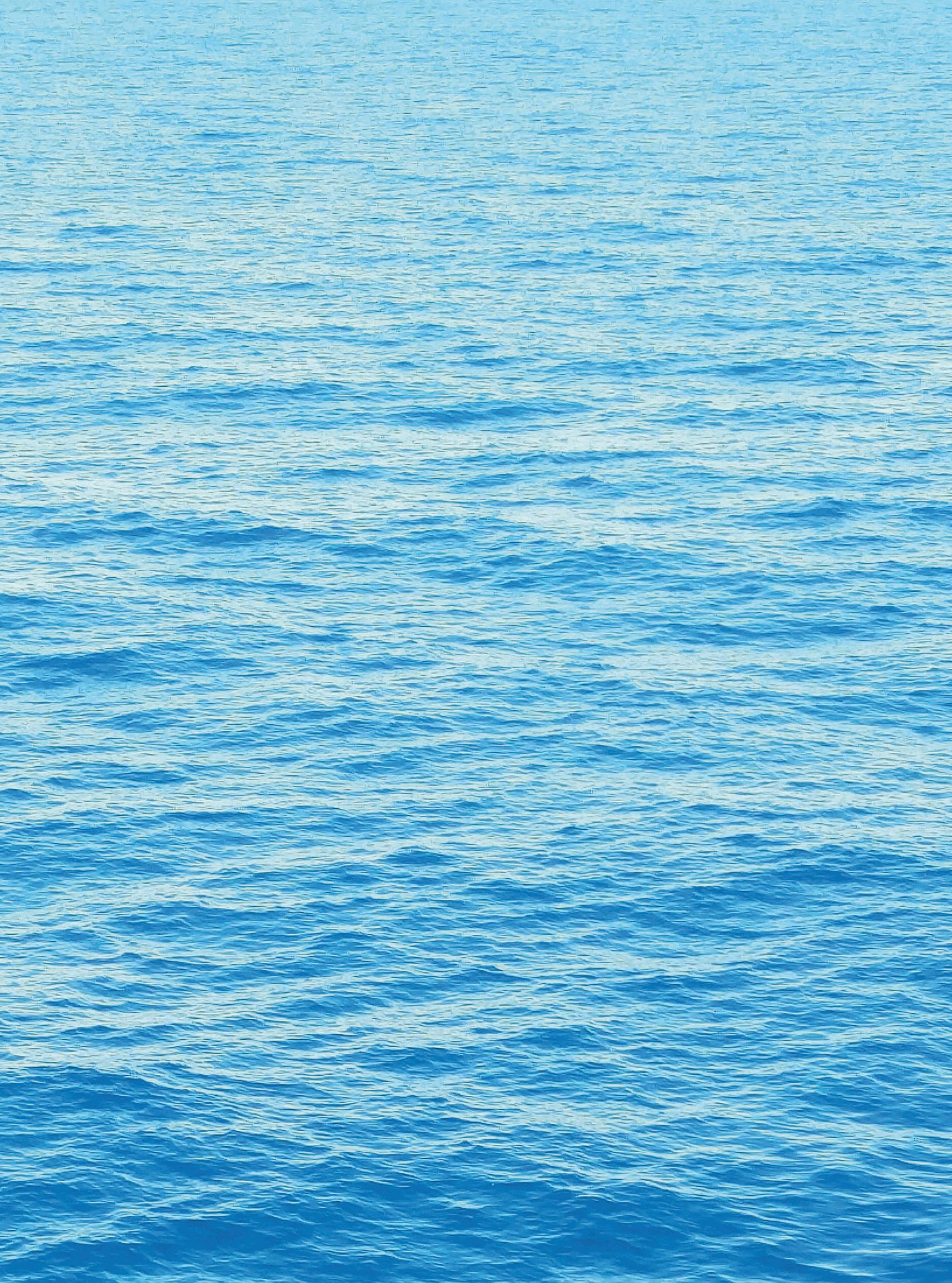
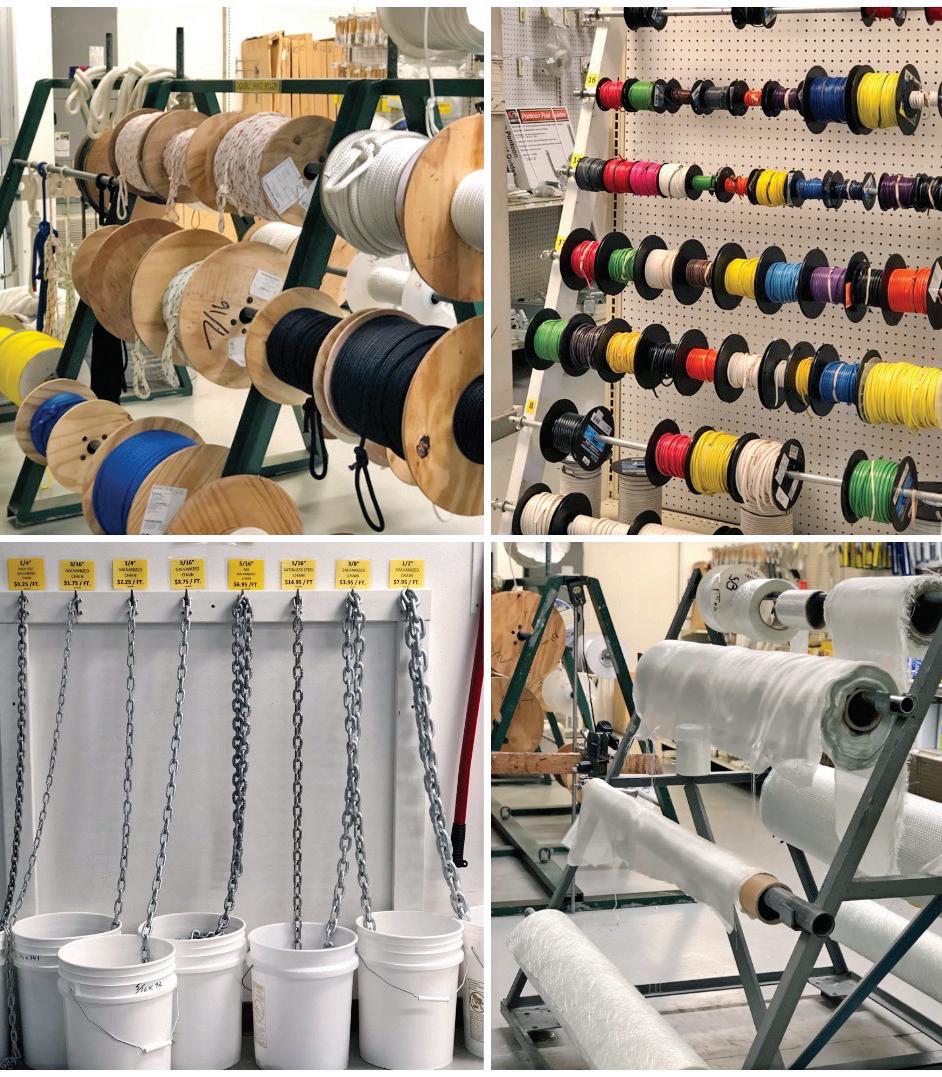

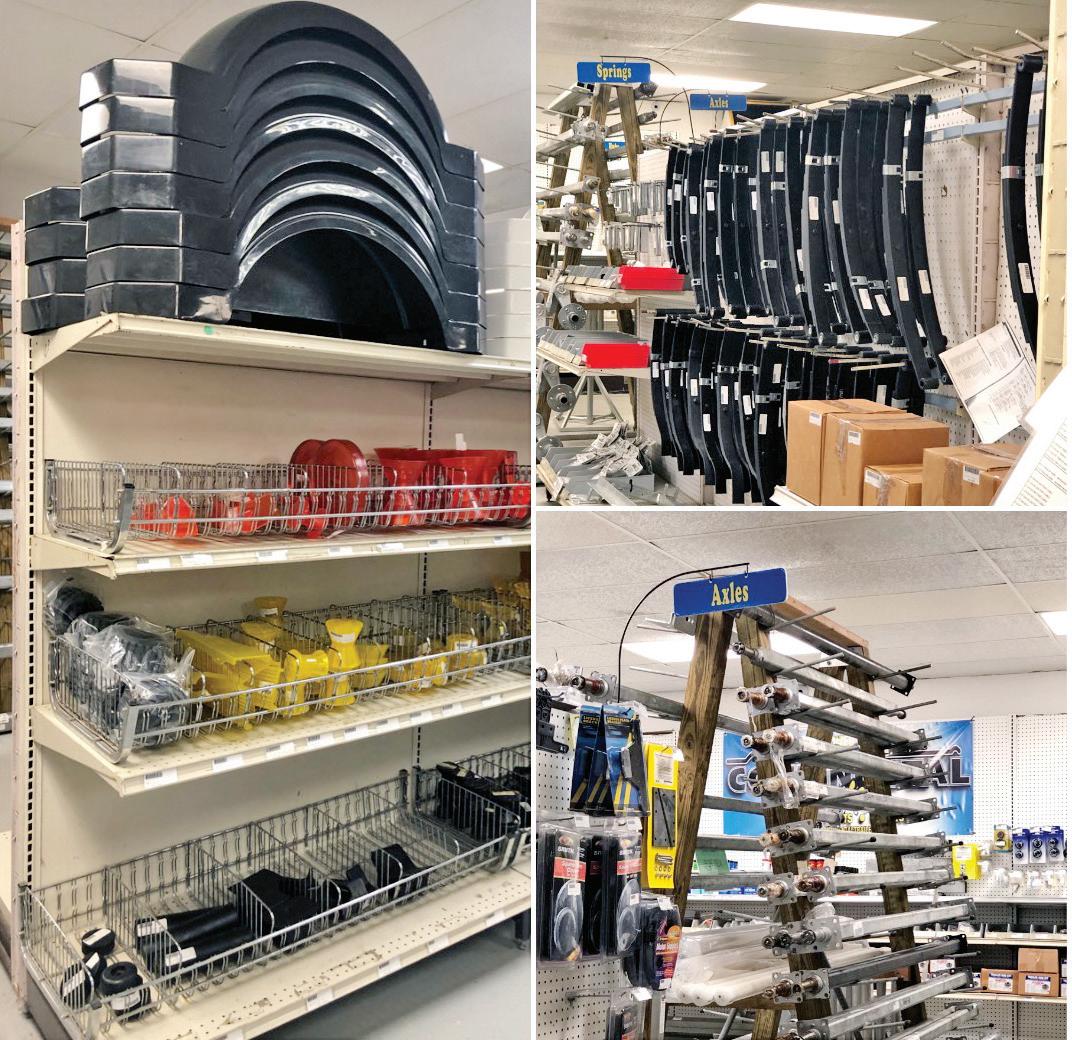
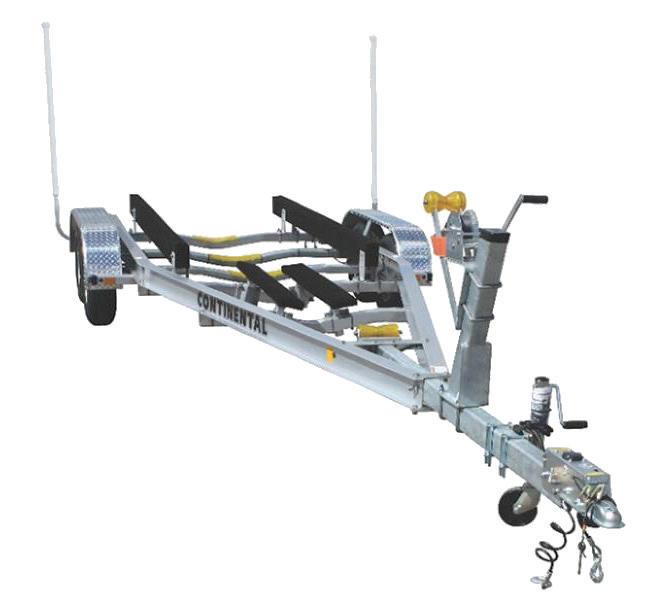











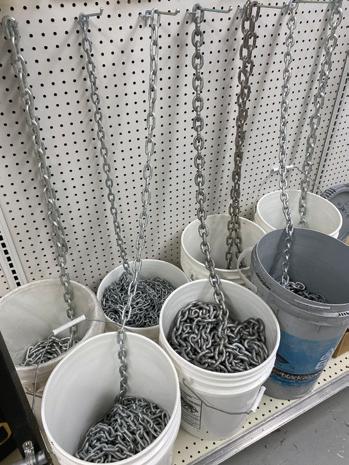

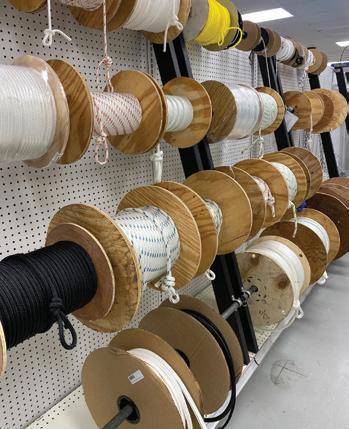
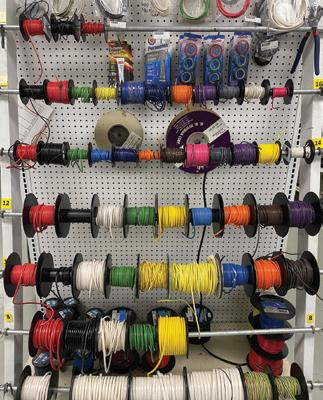


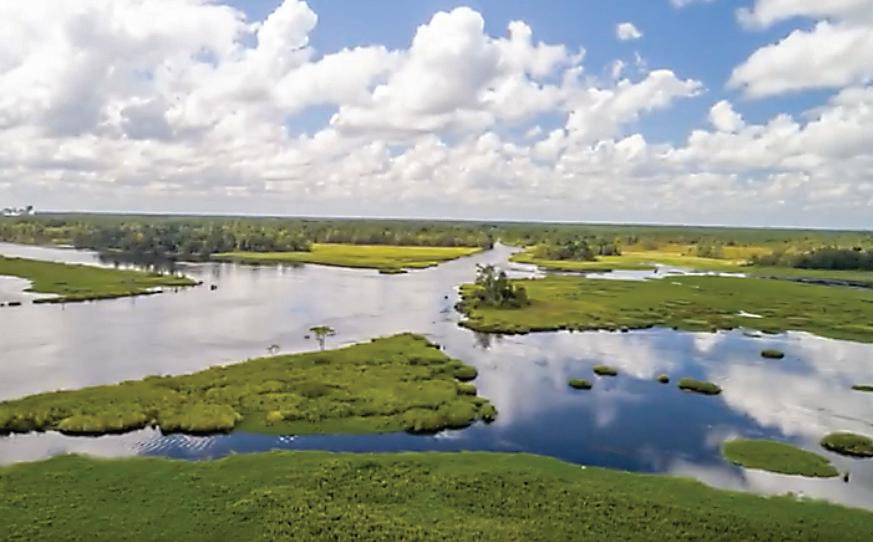

Berkeley County is a wonderland for outdoor enthusiasts, sports bu s, adventure seekers, and water lovers. From exemplary fishing for striped bass, or a trophy largemouth bass, to our hiking trails and water activities, along with scenic outdoors where you can catch a glimpse of white tail deer and gators, Berkeley County has activities to fit all visitors and families.
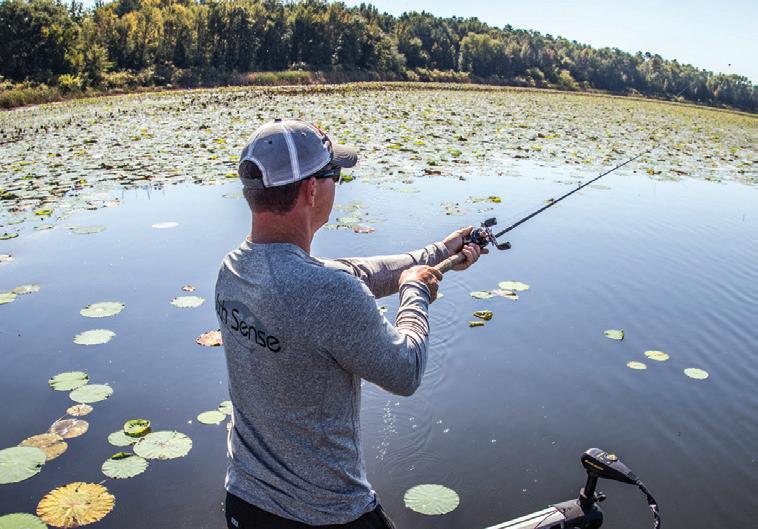
Learn more about Berkeley County at: exploreberkeleycounty.com


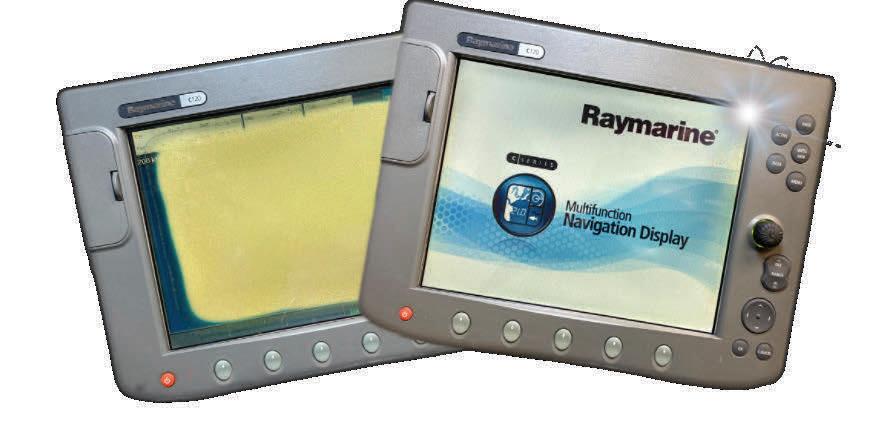
Researchers have designed and tested a new style of hook that takes catch-and-release to a whole new level. ese “bite-shortened” hooks are intended to allow sh to “release themselves” without being handled by the angler.

Dr. Holden Harris, a postdoctoral researcher at the University of Florida’s Nature Coast Biological Station, was the mastermind behind the study. In his write up on Hook Line & Science, a North Carolina Sea Grant blog, he promoted the bene ts of e cient de-hooking and minimal handling of caught sh to considerably improve chances of survival for released sh. e hook he tested is a modi ed jig, which researchers clipped at the point, so that this “bite” portion of the hook—the business end— was reduced in length from 15 mm to 10 mm. e simple modi cation just clipped the barb and vertical length beyond the bend of the hook before it was re-sharpened. Harris tested it against a standard jighead as well as a jighead with the barb led down on 150 spotted seatrout. ey went shing with all three jigheads, reeled in the sh and then allowed the sh to op around boat-side until they either did or did not come unhooked.
“We found promising results for the bite-
 HARRIS
HARRIS

shortened modi ed hook, which enabled anglers to land 91 percent of hooked spotted seatrout and then release 87 percent of those sh without direct handling,” Harris wrote. “In comparison, the self-release success rates were 47 percent using barbless hooks and 20 percent using standard, unmodi ed hooks.”
Additionally, Harris found that smaller seatrout were able to “self-release” at higher rates than larger ones.
Coastal Angler contributor and seatrout-on-










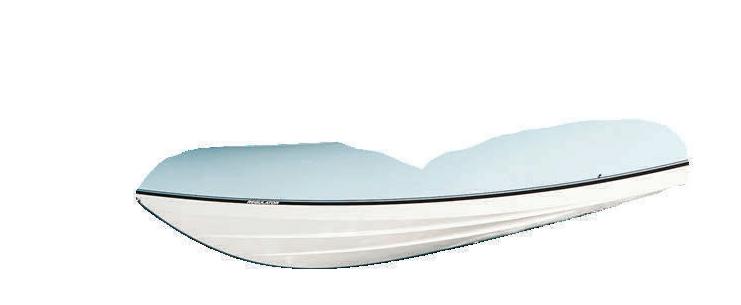
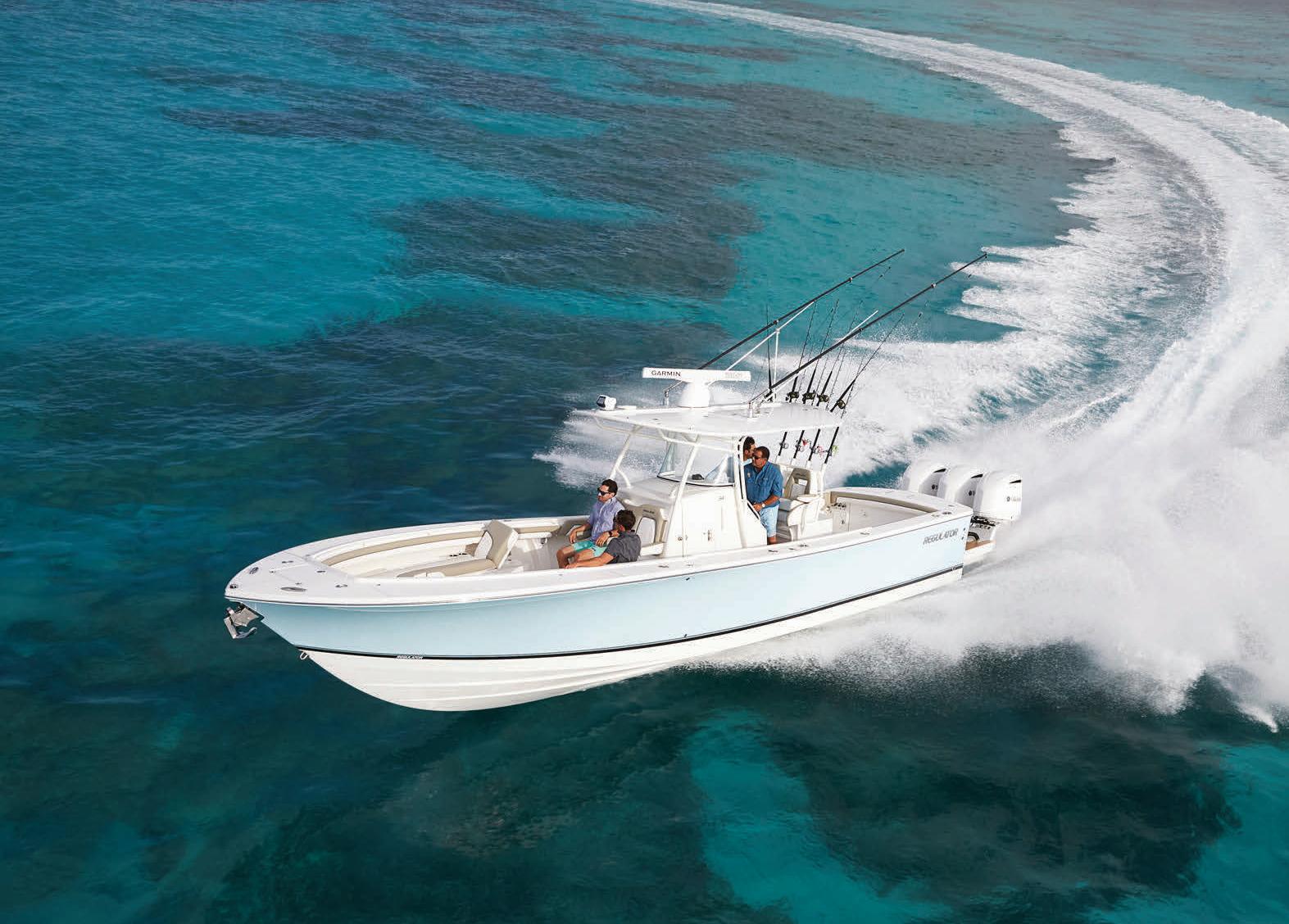
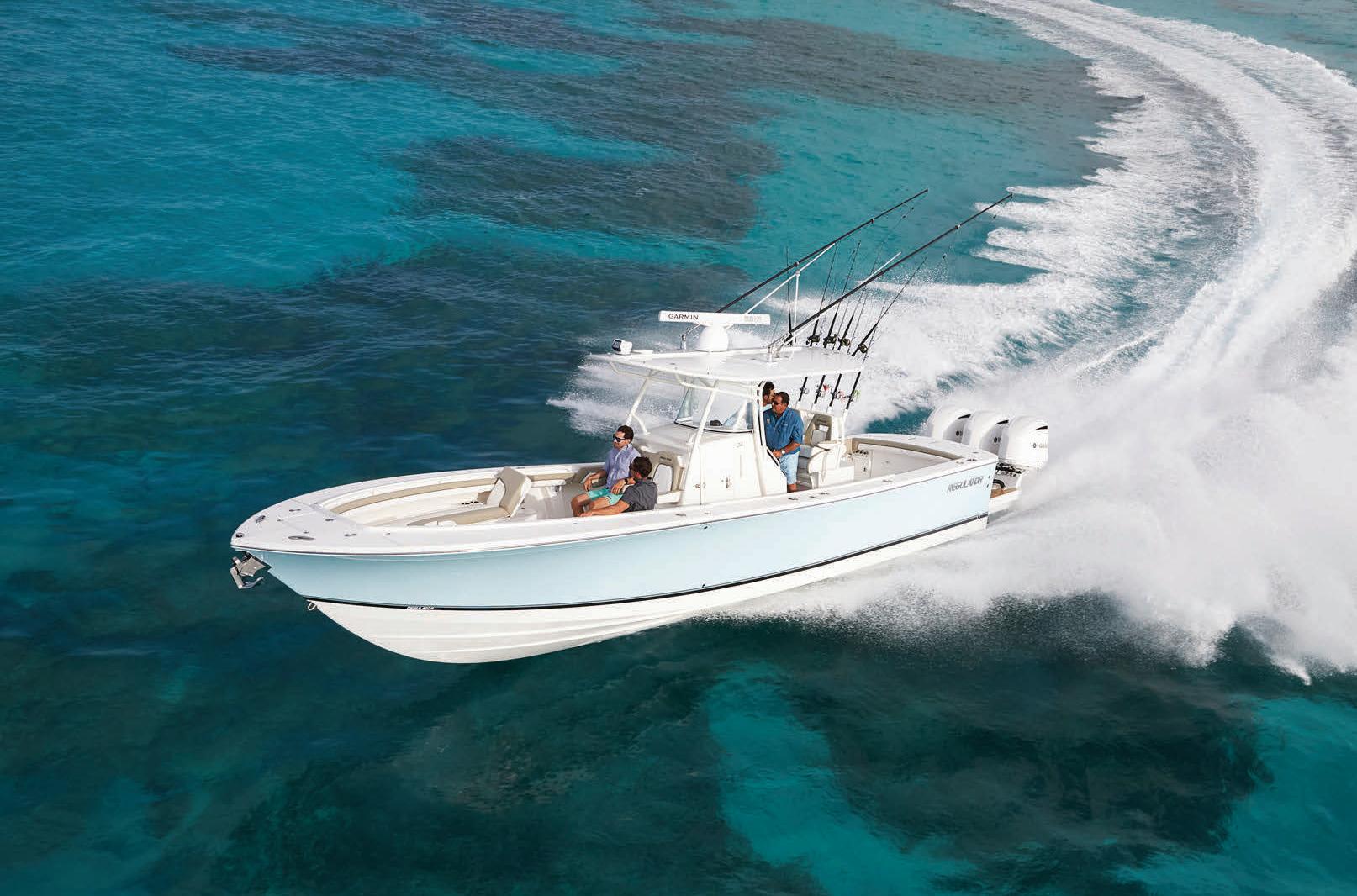

arti cials guru Michael Okruhlik has written on his use of barbless hooks when targeting pods of trout crashing bait. He said the ability to quickly and safely release sh without taking them out of the water allows him to get back in the action faster.
Maybe anglers would use a hook designed to let sh come unbuttoned?
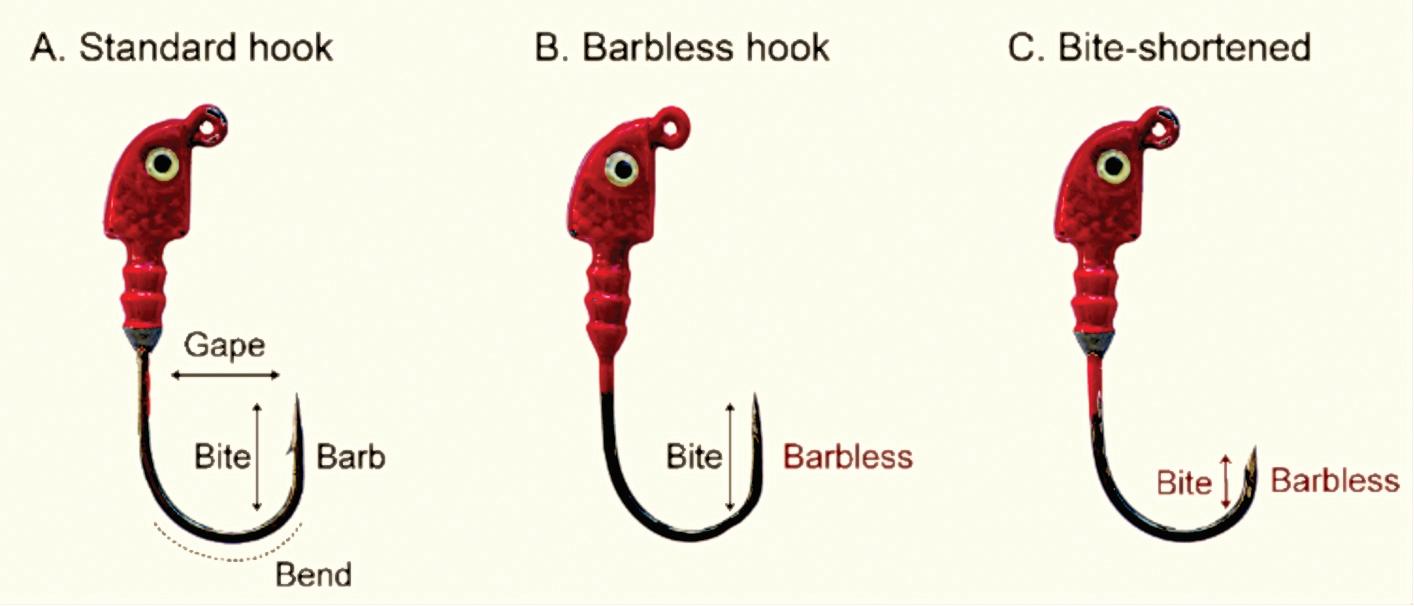
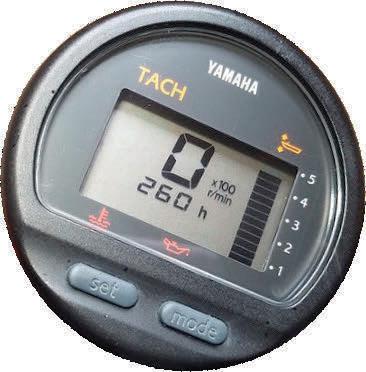
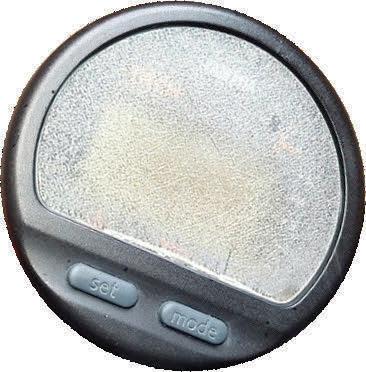
For a video of this hook modi cation, see https://youtu.be/VC23oNikyc8


Every year in Basel, Switzerland, the world’s best-known luxury watchmakers gather to display their new timepieces. It’s a great event for spotting timepieces that standout–– in performance and in personality. We saw one impossible to ignore: a precision dive watch with an arresting green dial. But we also saw the five-figure price tag and knew we could bring our customers that exact same precision and stand out appeal for a whole lot less. The Stauer Evergreen Diver is that timepiece.
Built like a submersible battleship with a stainless steel case, caseback, and band, the Evergreen Diver is water-resistant down to 660 feet or 20 atmospheres, a feat facilitated by a hardened crystal and screw-down crown.
Green On Your Wrist AND In Your Pocket. You could pay an awful lot elsewhere for this verdant virtuoso, but the majority of the cost is in the big designer name upcharge. We think those guys are all wet. This is how you own a top-of-the-line dive watch without helping pay for some marketing guy’s yacht.

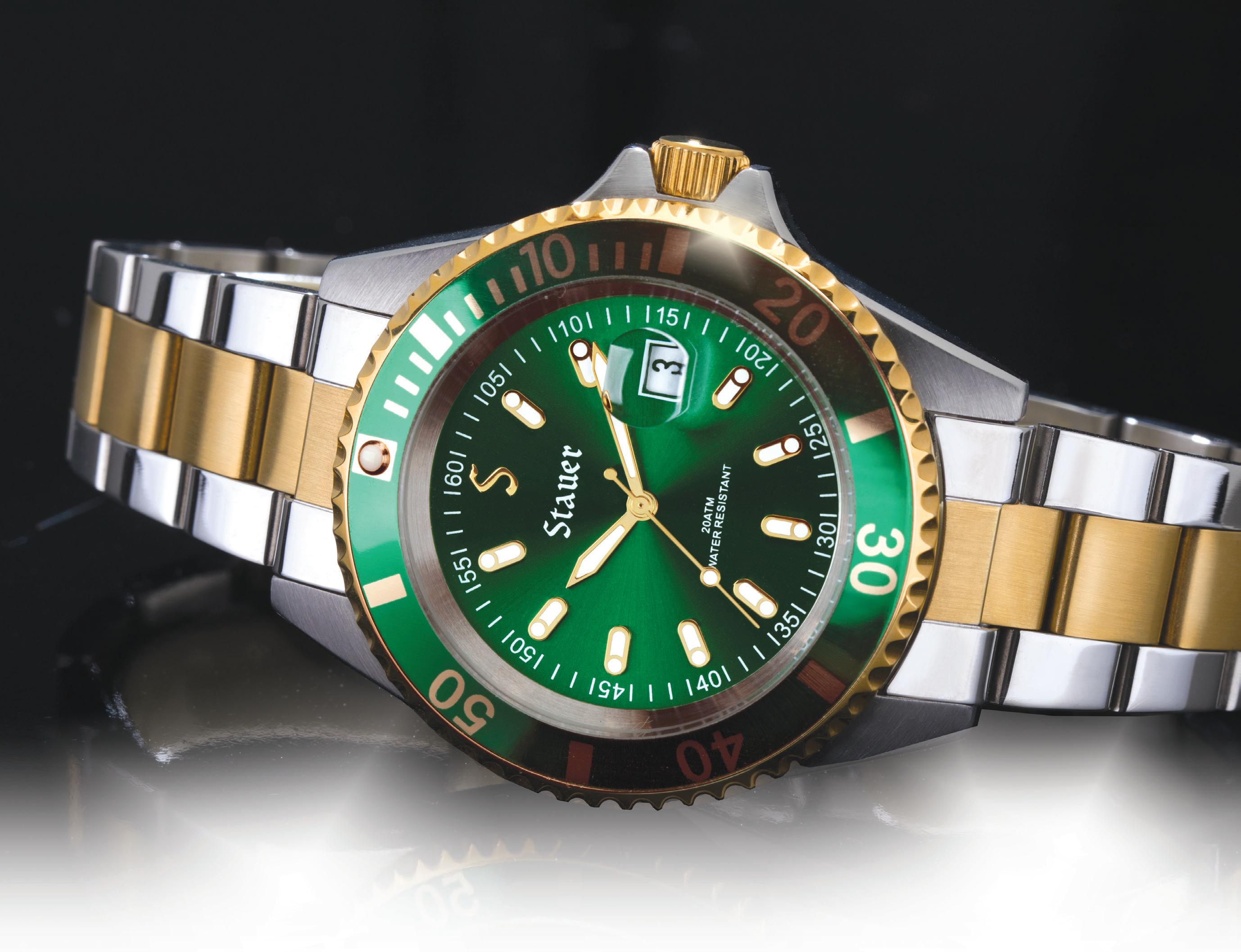
Satisfaction Guaranteed or Your Money Back. Wear the Evergreen Diver for 30 days. If you’re not completely happy, send it back for





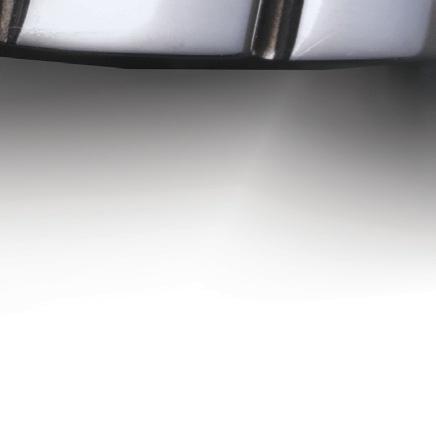

Amonster gold sh aptly named “Carrot” has been making the rounds on social media recently a er the sh was caught from a trophy carp lake in Champagne, France. UK angler Andy Hackett caught the nearly 70-pound bright orange sh from Bluewater Lakes, a heavily managed, privately owned pay-to-play shery that boasts of carp weighing heavier than 90 pounds.
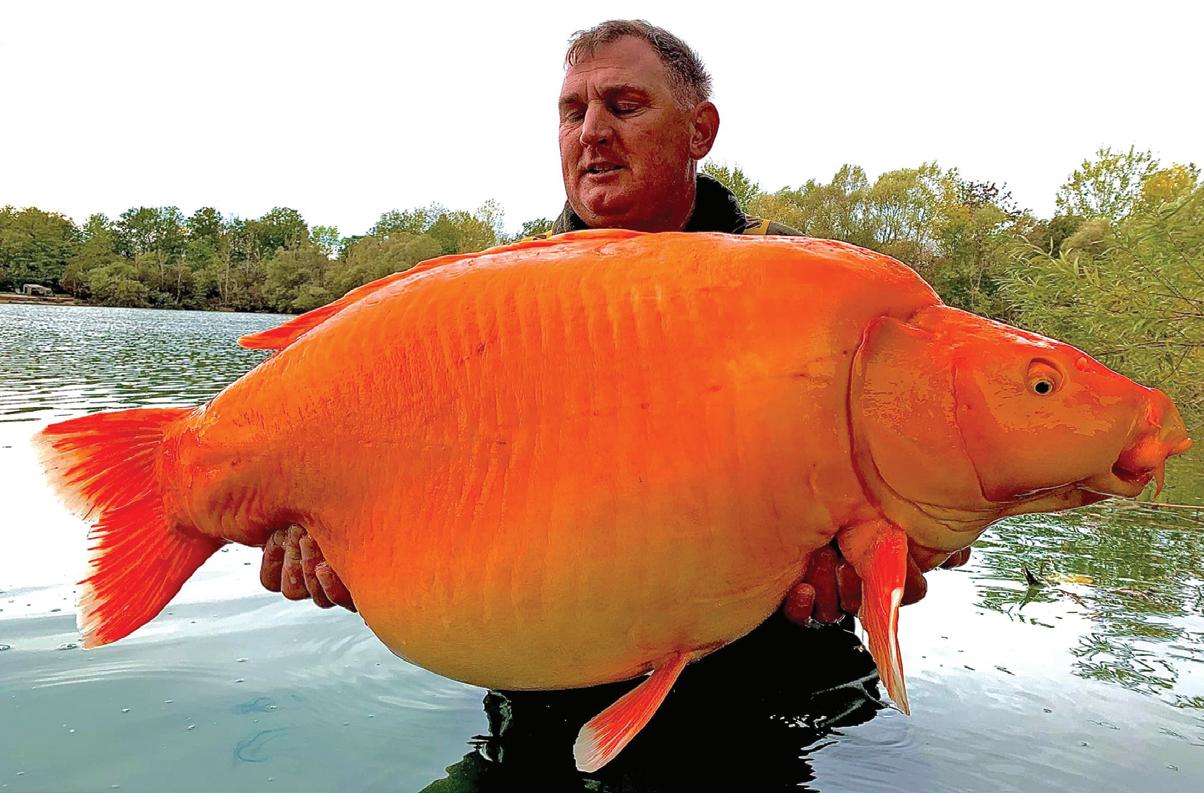
Carrot seems to be somewhat of pet, but not the type you’d keep in a sh bowl. She is a crossbreed between leather carp and koi, and was stocked in the lake 15 years ago to give anglers an interesting sh to pursue.
“I always knew e Carrot was in there but never thought I would catch it,” said Hackett. It took him 25 minutes to reel in pot-bellied carp, which o cially weighed an astounding 67.4 pounds.
Carp caught at Bluewater Lakes are handled very carefully with a strict catch-and-release policy.
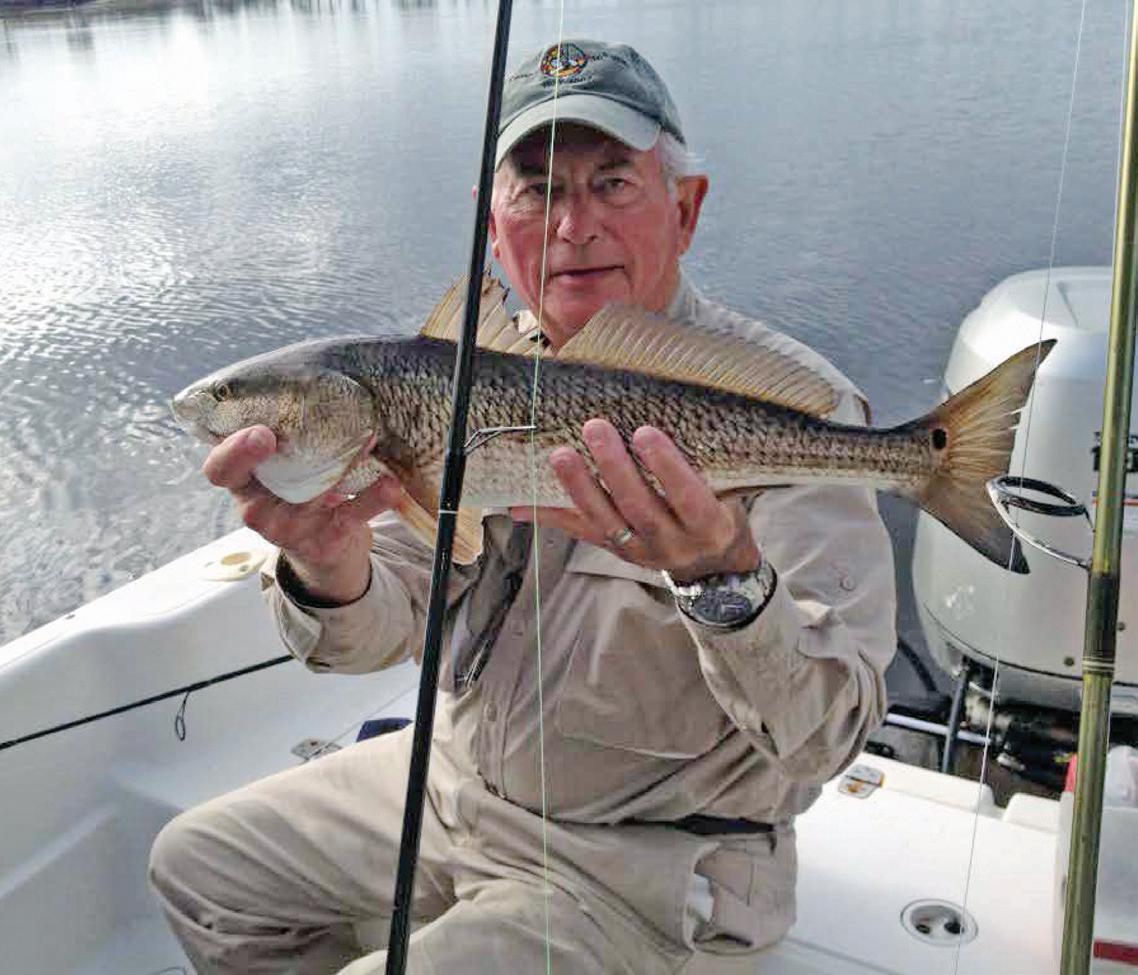
For more record sh, visit coastalanglermag.com.


Some cold but very fun shing days are ahead, and a Trapstyle bait is my absolute favorite way to sh this time of year. Typically sh group up in winter, and whether that be bait sh or bass, there are opportunities that make lipless crankbaits absolutely deadly!
rowing a lipless crank around areas where sh are chasing bait or where they are grouped up has caught lots of bass and some big ones. Even casting this bait as a search bait can work wonders. ere are so many options for lipless cranks that it can get confusing. I’ve experimented plenty, so I hope this article helps.
Traps range from ¼ oz. up to 1 oz. in weight, and every size can be used di erently. I pick sizes depending on the depth I’m shing or the depth of the structure, and I also consider the natural bait that is prevalent in the area. If you’re shing shallow or around tiny bait sh, a ¼-oz. size will be the best bet. A ½-oz. is usually my goto. It’s great for the mid-range depths of 5 to 10 feet, and it imitates a range of bait sh sizes.
A ¾-oz. is a bit bigger, and I don’t throw it as much, but it certainly has its place in 10 to 20-foot depths.


Remember, you can always vary your retrieve to get these baits higher or lower in the water column.
Color is another key factor. Ninety percent of the time, I sh a bait sh color. Whether it’s a shad, shiner or bluegill pattern, natural colors always work for me. I also throw orange or red a lot in winter. ese colors imitate craw sh, and they work where craw sh are prevalent. Match your bait color to the forage in the lake.
e last factor for lipless baits is sound related. ey come in silent, multi-rattle or single-knocker versions. I go silent for very clear water and heavily pressured sh, when appearing natural is important. e multi-rattle baits make a lot of noise, and the commotion draws strikes. My go-to, though, is the one-knocker style. is sound is unique and a little deeper pitched. I feel like sh, over the years, have become accustomed to the loud versions. I nd the single-knocker gets a few more bites in most situations.
With treble hooks, rod selection is important. You just reel into the sh when you get a bite, and this means your rod needs a solid backbone to drive those hooks and also a good amount of tip for keeping sh on during the ght. My go-to rod is a 13 Fishing Omen Black 7’4 Medium Heavy Moderate. e 13 Fishing Concept A 7:5:1 is a perfect reel for this application. I sh 15- to 20-lb. Seaguar Invizx line, depending on the structure I’m shing.
I hope these Trap tips help you put a few more sh in your boat this winter!
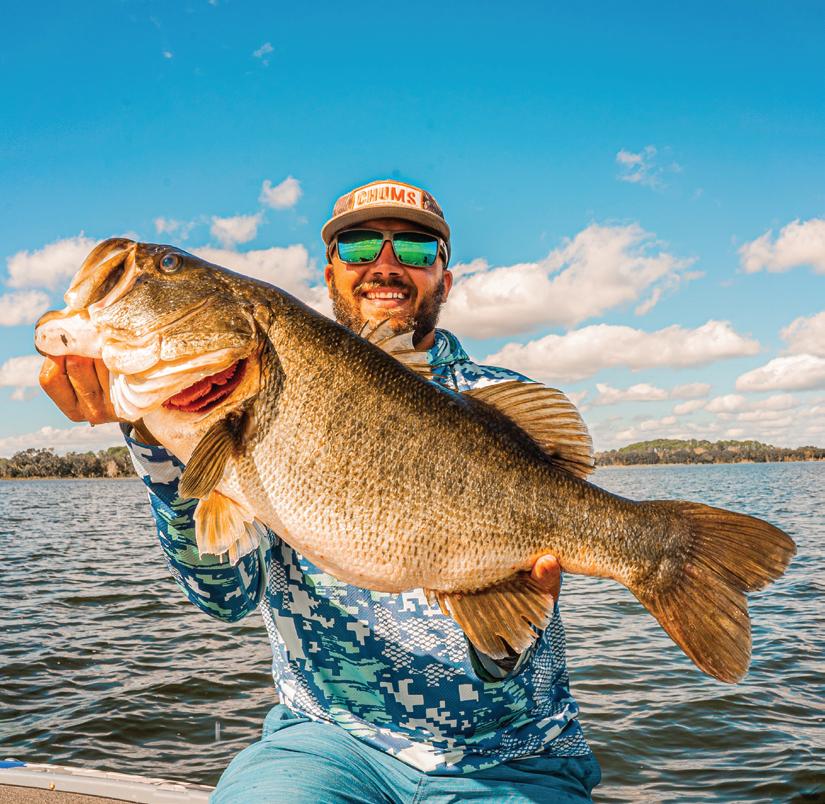
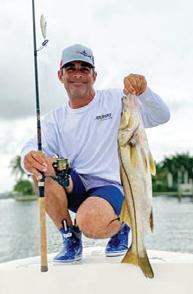

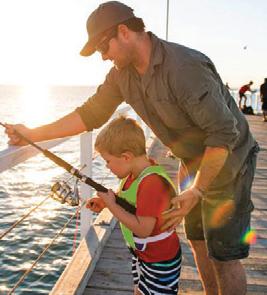
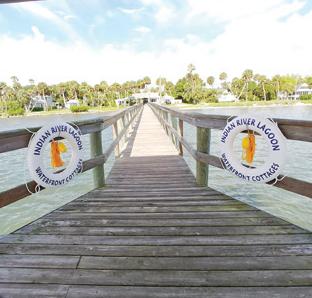

Tyler Woolcott is a professional tournament angler and guide. Check out his website at www.tylerwoolcott shing.com.



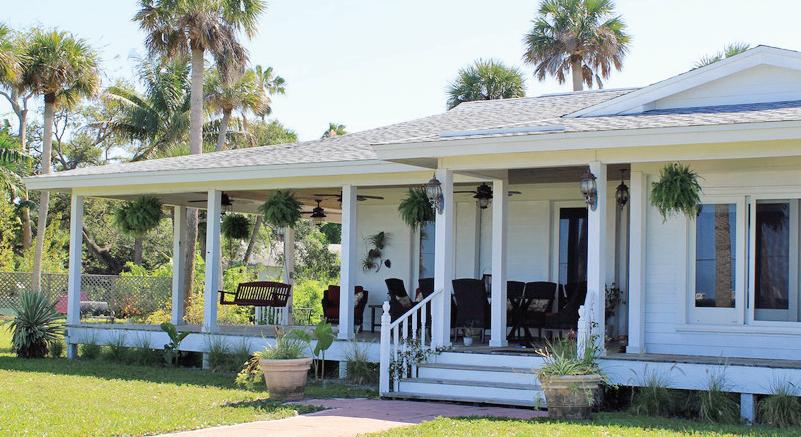
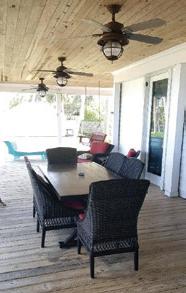
ANew Jersey angler eked out a new state record for albacore (long n) tuna in October when he boated a 78-pound, 2.4-ounce long n that bested the previous 1984 record by 3.4 ounces.
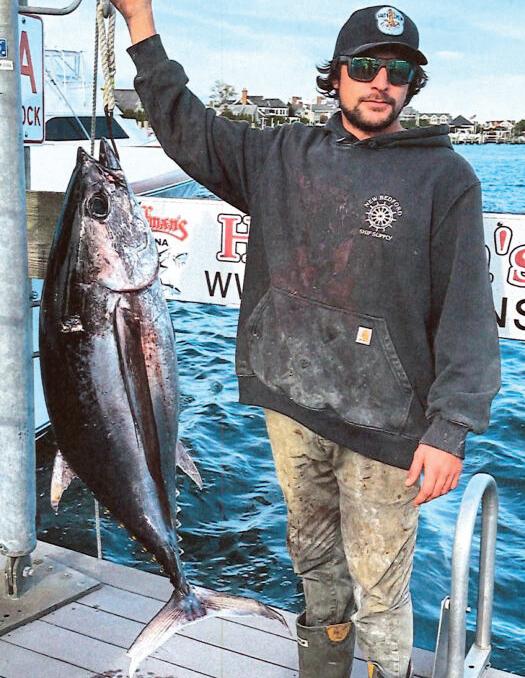
Matthew Florio, of Brick, N.J., is a commercial scalloper and he was shing with the rest of his scalloping crew aboard the Luna Sea at the east elbow of Hudson Canyon, the largest known underwater canyon o the east coast of the U.S. ey were at least 75 miles o shore and chunking for yellow n tuna, which is a technique that involves cutting up a bunch of butter sh and throwing them overboard before following up with hooked chunks of butter sh. e crew was already having a good day with yellow ns when Matthew hooked into his big albacore. He battled it in with a Kevin Bogan 30 Stand Up rod and a Penn 30 reel loaded with 60-pound mono lament. e sh measured 48 and 3/8 inches long and had a girth of 37 inches. e previous record was a 77-pound, 15-ounce long n caught in 1984 by Dr. S. Scannapiego in Spencer Canyon.
For more record sh, see coastalanglermag.com.
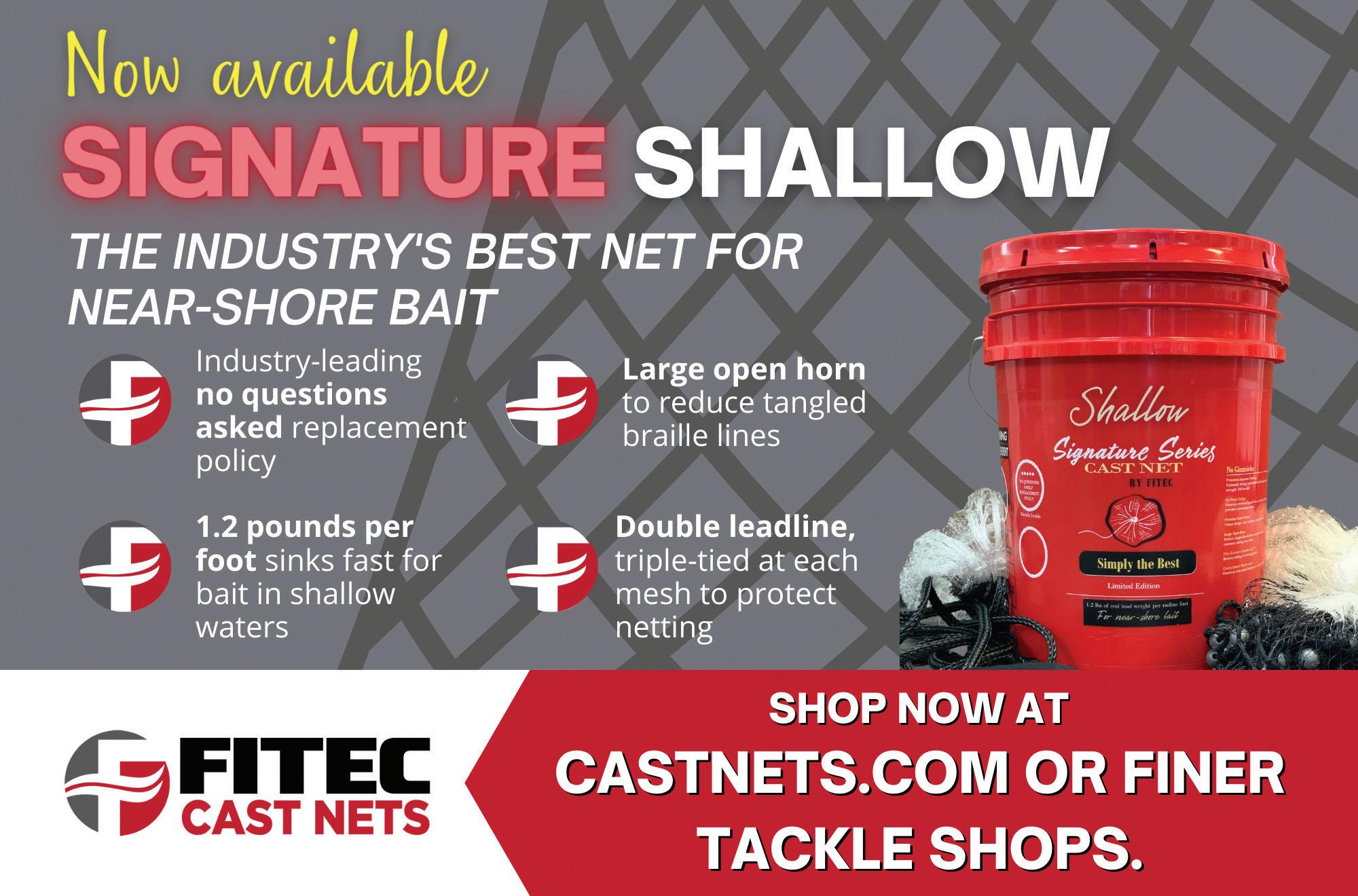

Now that Jack Frost has bay temperatures thoroughly chilled, only diehard lure chuckers will be found stalking the ats. Most of us have one thing in mind this time of year, catching a trophy trout. Here is how I approach my quest for that dirty 30-incher.
When water temperature stabilizes in the COLD range, all the migratory forage ees for warmer pastures. e bays are le with larger mullet as the primary food source for prized speckled trout. is is the time of year that I pull out my larger lures. is could be a longer length, a wider pro le, or both. is doesn’t have to be a 12-inch lure that is no fun to cast all day, but I do upsize from my typical 3- and 4-inch lures that I use most of the year. We have all seen a 25-inch trout with a 15-inch mullet in its belly, so they will eat something huge, but giant baits aren’t as fun to sh.
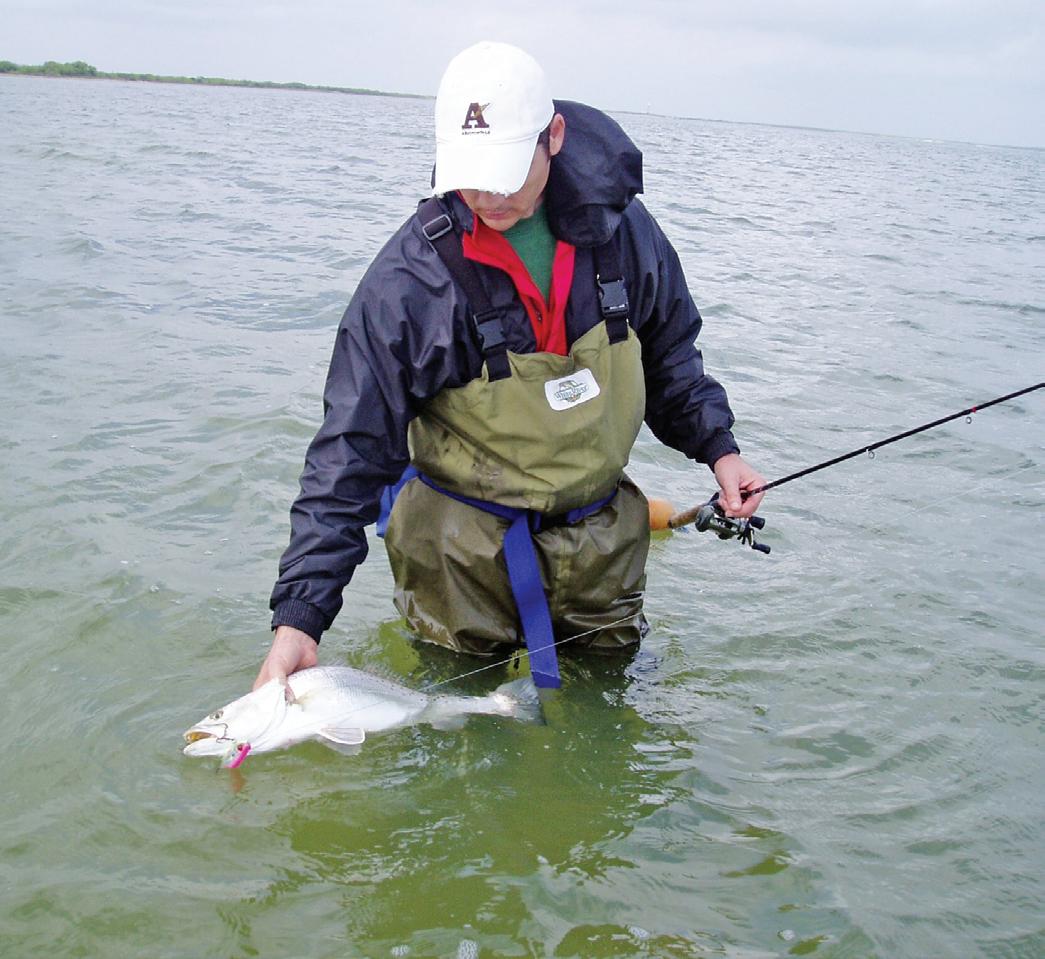
My con dence lures this time of the year are typically a 4-inch wide-pro le slow-sinking lure or a 5-inch bulky body paddletail. Since plastisol is buoyant, the bulky lure will have a slower sink rate, which I prefer under most conditions. e
slower sink allows for dual bene ts this time of year. Logically, the slower sink rate matches the slower mood of a cold sh. Also, I spend a lot of time targeting sh over shallow grass in knee-deep water. A slower sink rate keeps my lure in the strike zone longer before it disappears into the grass.
weedless hook. Depending on the conditions, I might go weightless or with a 1/16- or 1/8-ounce jighead. e weedless version keeps me out of the grass, it lessens the opportunity for my cold, less-dexterous hands to be impaled by a hook, and most of all, it does less damage to the trophy sh that I am targeting.
Areas I target will be near deeper water, have so er bottom, have visible forage, structure and hopefully be lowertra c areas. While planning trips, I take into consideration moon phase, current conditions and recent conditions when determining where to sh.
I have never caught a trophy trout by accident. I don’t know if that is lucky or unlucky, but every trout I have landed over 27 inches was on a day when I set out speci cally targeting larger sh. Case in point, if you want to catch trophy trout consistently, you must make the e ort to target them, sh where they live and be attentive to details. I know numerous anglers have caught large trout with no e ort, but most don’t catch two.
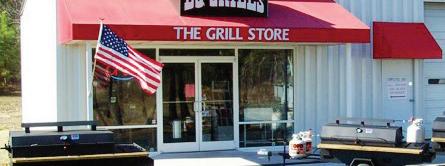

I t my 5-inch rattling paddletail with a
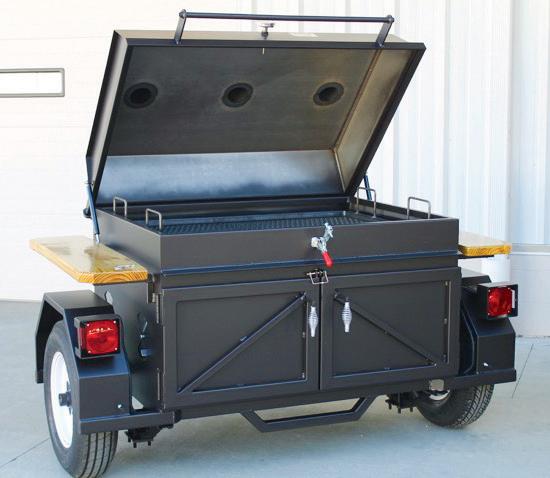
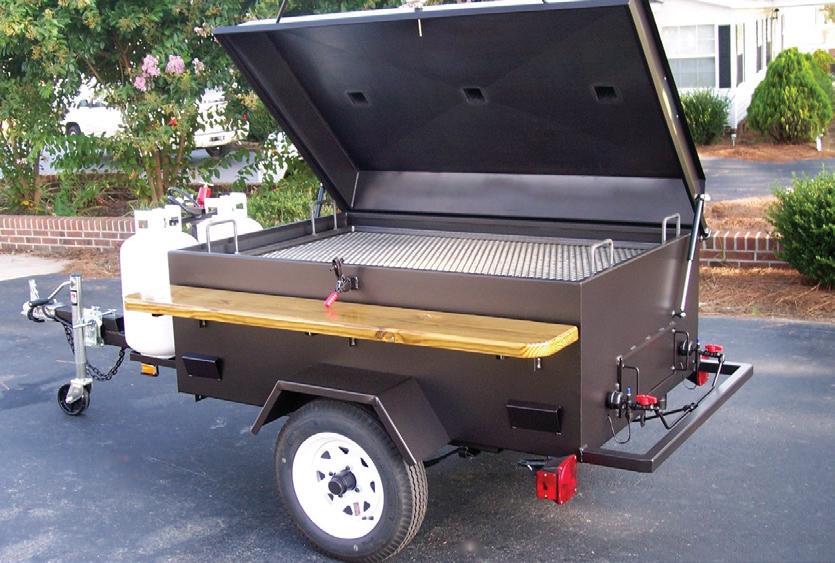
Capt. Michael Okruhlik is the inventor of Knockin Tail Lures®, and the owner of www.MyCoastOutdoors.com.


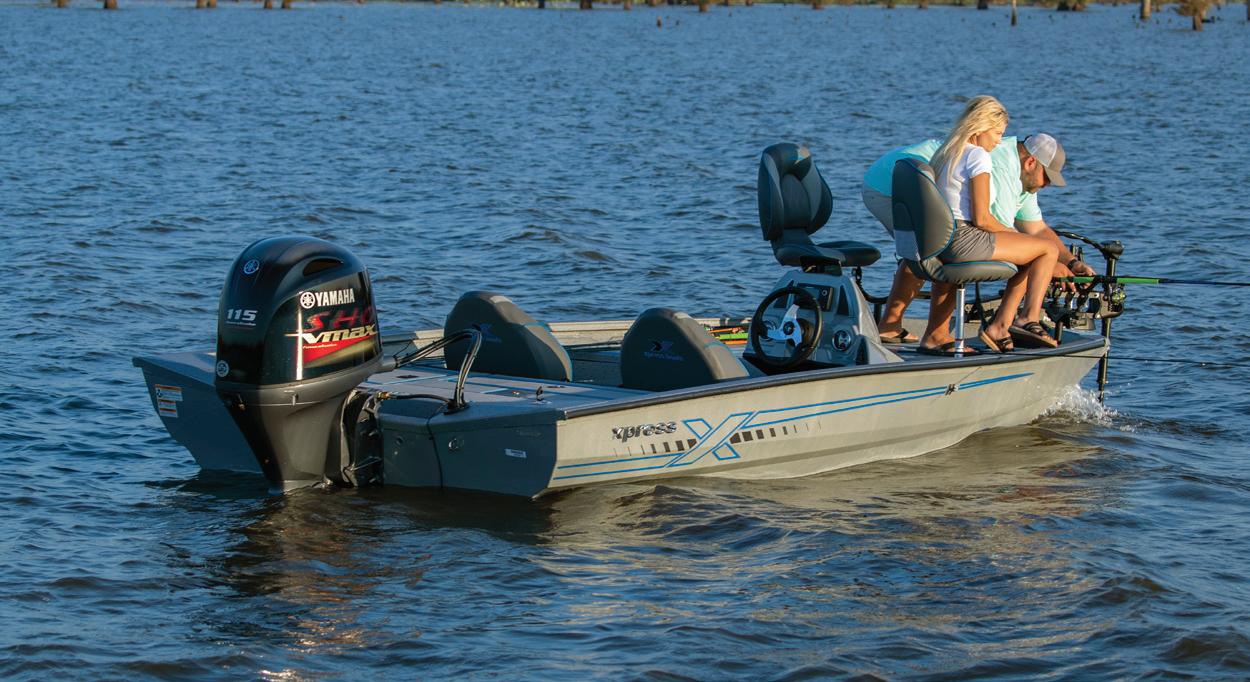


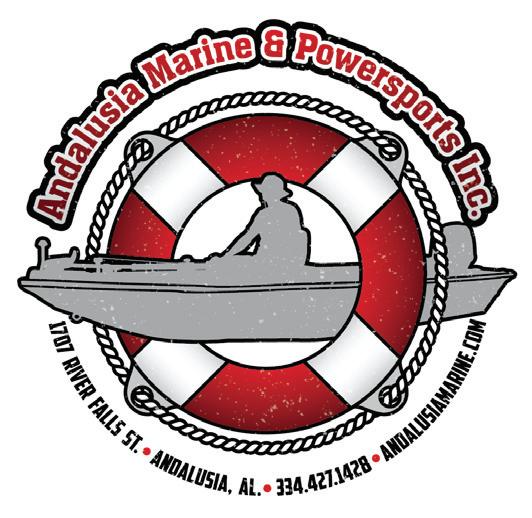

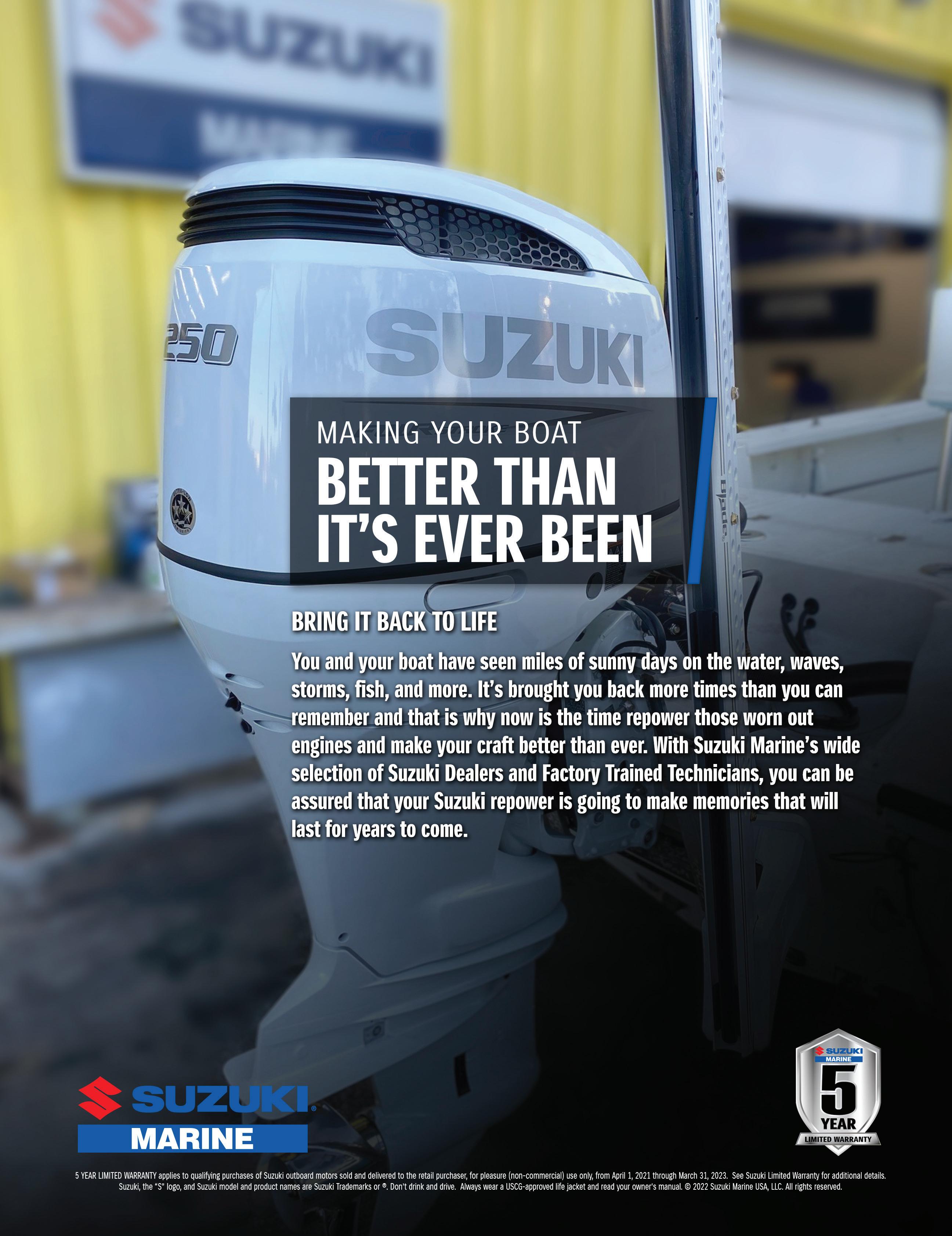

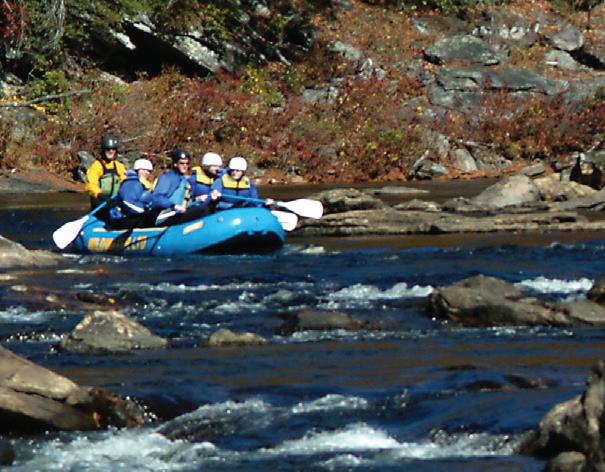
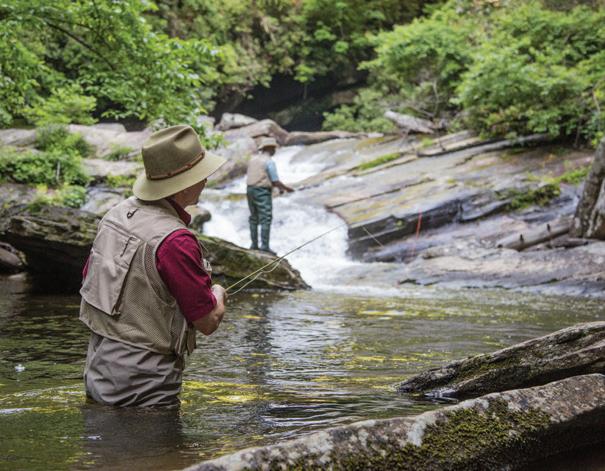






Every season is the best season to explore the many treasures in the Upcountry.


